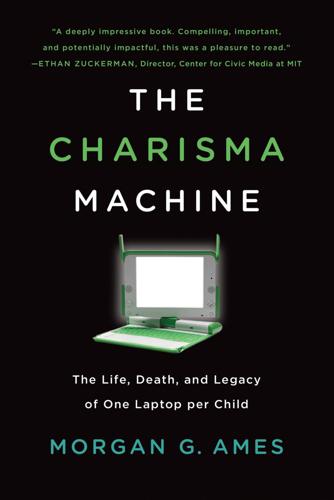
The Charisma Machine: The Life, Death, and Legacy of One Laptop Per Child
by
Morgan G. Ames
Published 19 Nov 2019
Lowes, Susan, and Cyrus Luhr. Evaluation of the Teaching Matters One Laptop per Child (XO) Pilot at Kappa IV. Institute for Learning Technologies, Teachers College, Columbia University, June 2008. http://www.teachingmatters.org/files/olpc_kappa.pdf. Luyt, Brendan. “The One Laptop per Child Project and the Negotiation of Technological Meaning.” First Monday 13, no. 6 (June 2, 2008). https://doi.org/10.5210/fm.v13i6.2144. Lydon, Christopher. “One Laptop per Child?” Radio Open Source, February 20, 2007. http://radioopensource.org/one-laptop-per-child/. MacKenzie, Donald. An Engine, Not a Camera: How Financial Models Shape Markets.
…
On the other end, a user who is invited to an activity can accept the invitation and then access the shared activity from her Neighborhood or Friends views. 44. Levy, Hackers, 31. 45. OLPC Wiki, “OLPC: Five Principles.” 46. Papert, Children’s Machine, ix–x, 4, 15, 57–81; Papert, Mindstorms, x–xi, 67. 47. Negroponte, “No Lap Un-topped.” 48. Krstić, “Google EngEDU Tech Talk.” 49. Zuckerman, “It’s Cute. It’s Orange.” 50. Derndorfer, “OLPC School Servers.” 51. OLPC Wiki, “Our Market: Black Market”; Fisher, “OLPC’s XO Laptop.” 52. Lydon, “One Laptop per Child?” 53. Blizzard, “One Laptop per Child.” 54. Levy, Hackers, 28. 55. Regarding Logo as memory hog, see Thornburg, “Whatever Happened to Logo?
…
.: IEEE, 2007. https://doi.org/10.1109/ICTD.2007.4937397. Andersen, Lars Bo. “Lines of Marginalisation in a One Laptop per Child Project.” Paper presented at the Society for Social Studies of Science (4S)/European Association for the Study of Science and Technology (EASST) Joint Conference, Copenhagen Business School, Copenhagen, Denmark, October 19, 2012. http://www.larsbo.org/publications/olpc/lines-of-marginalisation-in-an-one-laptop-per-child-project. ———. “A Travelogue of 100 Laptops: Investigating Development, Actor–Network Theory and One Laptop per Child.” PhD diss., Aarhus University, 2013. http://www.laptopstudy.net/. Anderson, Benedict.

The Future of the Internet: And How to Stop It
by
Jonathan Zittrain
Published 27 May 2009
See United Nations Development Programme, $100 Laptop Project Moves Closer to Narrowing Digital Divide (Jan. 28, 2006), http://content.undp.org/go/newsroom/january-2006/100-dollar-laptop-20060128.en?categoryID=349425&lang=en; OLPC, One Laptop per Child http://wiki.laptop.org/go/ One_Laptop_per_Child. 2. See One Laptop Per Child (OLPC), Progress, http://www.laptop.org/en/vision/ progress/index.shtml; Tim Bloomberg, Quanta to start “One Laptop” Project in Sept., THE CHINA POST, May 16, 2007, available at http://www.chinapost.com.tw/news/ archives/business/2007516/109813.htm. The post-launch phase is planned to include Mexico, all of Central America, Ethiopia, Angola, Pakistan, Vietnam, Indonesia, and the Philippines. OLPC, Map, http://www.laptop.org/map.en_US.html. 3. See Assoc.
…
But it will be better than one without powerful generative instrumentalities, one where the tools of monitoring are held and monopolized by the faceless institutions anticipated and feared in 1973. Conclusion Nicholas Negroponte, former director of the MIT Media Lab, announced the One Laptop Per Child (OLPC) project at the beginning of 2005. The project aims to give one hundred million hardy, portable computers to children in the developing world. The laptops, called XOs, are priced around $100, and they are to be purchased by governments and given to children through their schools.1 As of this writing Brazil, Libya, Mexico, Nigeria, Peru, Rwanda, and Uruguay have committed to a pilot run that will have the XO’s assembly lines ramping up to five million machines per month and totaling approximately 20 percent of all laptop manufacturing in the world.2 The pitch to governments footing the bill emphasizes alignment with existing schoolhouse curricula and practices.
…
Both concepts are important for experience-based learning, and OLPC itself invokes both ideas. 5. See Posting of Evan Blass to Engadget, Microsoft Will Sell $3 Software to Developing Countries, http://www.engadget.com/2007/04/20/microsoft-will-sell-3-software-to-developing-countries/ (Apr. 20, 2007, 11:40), Michael Kannellos, Five Countries to Get Cheap Windows XP, CNET NEWS.COM, Aug. 10, 2004, http://news.com.com/Five+countries+to+get+cheap+Windows+XP/2100-1016_3-5304023.html 6. OLPC posted a request for content in October 2006. See OLPC Request for Content, OLPC Wiki, http://wiki.laptop.org/index.phpititle=Request_for_content&oldid=13244 (as of Oct. 3, 2006, 19:14 GMT). 7.

You've Been Played: How Corporations, Governments, and Schools Use Games to Control Us All
by
Adrian Hon
Published 14 Sep 2022
While the modern conception of technology broadly, and Silicon Valley specifically, being a positive force in the world dates back to Stewart Brand’s 1968 Whole Earth Catalog, it was only later that most people believed personal computers and the internet would genuinely change the world for the better. The One Laptop per Child (OLPC) initiative, born in 2005, aimed to disrupt education “for all kids—especially those in developing nations” by means of a one-hundred-dollar laptop.24 A few years later, antiregime protests in Iran were dubbed as the “Twitter Revolution” in the press, and academics would credit Facebook for mobilising activists and coordinating protests during the Arab Spring uprisings.25 The internet and social media seemed like unmitigated goods, with any downsides so minor as to be barely worth consideration.
…
But the numbers didn’t matter—in true Silicon Valley fashion, it was the dream they bought into, not the reality. GAMIFICATION AS CHARISMATIC TECHNOLOGY The allure of utopian gamification is best explained by a similar utopian project: One Laptop per Child, founded in 2005. The story is well told in Morgan Ames’s book The Charisma Machine: The Life, Death, and Legacy of One Laptop per Child. Ames chronicles the project’s many mishaps: the laptops never reached the vaunted one-hundred-dollar target, they were slower and more fragile than initially advertised, and when deployed, they were barely usable as educational devices due to limited internet connectivity and buggy software.
…
This means that a charismatic technology does not even need to be present or possessed to have effects.”34 It didn’t matter that the OLPC’s specifications were disappointing, or that it lacked the originally charming hand crank that would recharge its battery, or that software updates would regularly delete children’s data. The OLPC’s charisma transcended such material concerns through its promise to transform education for the world by literally airdropping millions of cheap laptops around the world. These laptops would disintermediate teachers from the educational process, allowing children to achieve their full potential, just in the same way that the OLPC’s founders and funders reached their own potential: by learning how to programme computers at home. Ames calls this “nostalgic design”: “Key features of this laptop—focused on play, freedom, and connectivity—were based on how a number of OLPC developers nostalgically remembered their own (often privileged and idiosyncratic) childhoods rather than on contemporary childhoods in the Global South.
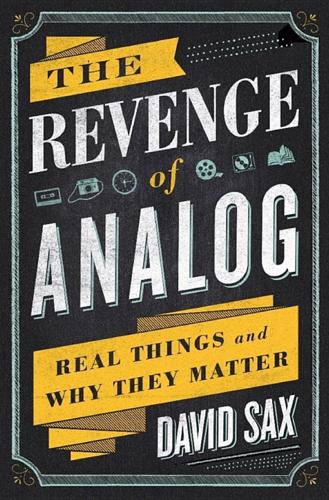
The Revenge of Analog: Real Things and Why They Matter
by
David Sax
Published 8 Nov 2016
The same logic of bridging the digital divide was behind the wildly ambitious One Laptop per Child (OLPC) nonprofit, spearheaded by MIT Media Lab founder Nicholas Negroponte and set up in 2005 with the backing of a vast coalition of philanthropists and technology companies. OLPC’s goal was to produce and distribute rugged, inexpensive, Internet-enabled laptops to the world’s poor with innovative features such as solar panels and hand cranks. OLPC successfully created several devices that met this goal, but in every other respect, OLPC was a colossal failure that typifies the hubris of tech-centric educational utopianism.
…
Last year, a report from the Organization of Economic Co-operation and Development concluded that “students who use computers very frequently at school do a lot worse in most learning outcomes,” and technology did nothing to improve scores across subjects, and less to bridge gaps between rich and poor students. In 2014 One Laptop per Child closed its Boston headquarters and drastically cut down on staff and new programs. OLPC’s great mistake was presuming the universal importance of a shiny imported technology in spite of the recommendations of people closer to the problem at hand. This problem is not confined to international development. In Detroit, I spoke with Amanda Rosman, the cofounder and executive director of the Boggs School, an innovative charter school in a poor neighborhood.
…
91 Hill, Jon, 114 Hirschfeld, James, 44–45 HMV, 13, 16 Hoarders, 97 hobby game market, 77 hobby stores, 78, 79, 85 Holley, Willie, 160 Hollywood Reporter (magazine), 72 home libraries, 128, 208, 227 Houstonia (magazine), 109 HP computers, 65 Huffington Post, 115 Huizar, Jose, 185 human assistance, preference for, 134 human-in-the-loop processes, 224 Hungry Hungry Hippos, 76 Husni, Samir, 104–105 hypercapitalism, 157 IBM computers, 65 ICQ, 217 IdeaPaint, 191 IDEO, 193, 225 Ilford film, 55, 71 I’m the Boss, 86 Impossible Project, 66, 67–70 In Wilderness Is the Preservation of the World (Thoreau), 232 independent booksellers increase in, 125 See also bookstores independent magazine publishing, 103–107 independent record stores, annual meeting of, 13 See also record stores Indigo, 127 information age, 219 information overload, 37, 111 information persistence, 191 Initiative, 108 innovation building blocks for, buzzwords in, 192 culture of, fostering, 214 deeply held values around technology and, 179 different narrative of, xvi driver of, 36 standard narrative of, trend running counter to, xiv, 155 Instacart, 166 Instagram, 62, 80, 94, 162, 170, 217, 224, 234, 235, 241 instant film photography, xv, 66, 67, 69–70 Instax camera, 70 integrative thinking, 175, 176–177, 197, 199 Intel, 163 Internet/web access to, in education, 183, 185 growing use of, economy based on, 152, 154 role in saving vinyl, 11–12, 20–21 at summer camp, 231, 235 trust and, challenge of, 145–146 view of, 46, 238 See also online entries investing, 170–172 iPads, 13, 42, 81, 84, 110, 111, 113, 132, 180, 182, 185–186, 188, 208, 234, 241 iPhone, ix, xiii, 62, 63, 73, 84, 140, 144 iPods, 7, 9, 12, 18, 19, 27, 28, 233 IRL, 237 See also reality iTunes, ix, 12, 19 Jackman School, 187–188, 203 Jackson, Wanda, 22 Jaipur, 87 job creation, 151, 152, 160, 161–166, 167, 171–173, 173 job market, 164, 165–166, 175 See also digital work; manual work Jobs, Steve, 138, 139, 206, 207–208 Johnson, Jeff, 182 Johnson, Ron, 139, 140 jukeboxes, 8, 9, 18 June Records, ix, xi–xii, 137 Kalanick, Travis, 155 Kaps, Florian “Doc,” 66–68, 69 Kartsotis, Tom, 150–151, 160, 167, 169, 172 Kassem, Chad, 17 Katigbak, Everett, 214, 215–216 Kaufman, Donna Paz, 127, 128 Kelly, Kevin, 226–230 keyboards, xvii, 186, 237 Keynes, John Maynard, 164 Khan Academy, 200 Kickbox, 208–209 Kickstarter, 43, 73, 91–92, 94, 95–96, 98 Kim, Eurie, 137, 138 Kind of Blue (album), 25 Kindle, 124, 130, 142, 143, 228 Kinfolk (magazine), 105 Kleinman, Gabe, 214 Kobo, 142 Kodak, 54, 55, 56, 57, 59, 63, 64, 71, 153 Kroger, 134 Krugman, Paul, 171 Kurtz, Michael, 13–14, 15, 16, 20 Kwizniac, 91 laboratory school, 187–188 Landor Associates, 36 Lanier, Jaron, 157 laptops early childhood education and, 182 in education, learning outcomes and, 183–185, 188, 190 See also computers Launch Monitor (blog), 111 Lazaretto (album), 21 LC-A camera, 59–60 Lechtturm, 43 LEGOs, 182, 198 Lennon, John, 26 Leslie, Jeremy, 104, 106, 111 letterpress cards/invitations, xiv letterpress printing, 44, 215 Levin, Diane, 180–181 Levin, Eric, 14 Levitin, Daniel, 37 Levy, David, ix Lexus and the Olive Tree, The (Friedman), 154 liberal arts programs, 192 Libin, Phil, 222 Lichtenegger, Heinz, 11, 17 Lieu, John, 213 Lim, Sen-Foong, 98 limitless selection, issue with, 130, 134 LinkedIn, 45, 46 Little Brother (magazine), 104–105 Live Action Role Play (LARP) retreat, 82 live performances, xv, 6, 15, 22, 27, 28 Livescribe, 47, 228 Lomographic Society International, 60 Lomography, 59–62, 64, 66, 71 Lonely Typewriter, The (Ackerman), 131 Long Good Read, The (newspaper), 116, 117 Long Tail, The (Anderson), 208 Los Angeles Times (newspaper), 185 Los Angeles Unified School District, 185–186 Lowery, David, 20 Lucas, George, 72 Lululemon, 126–127 luxury approach, 112, 114, 116, 150, 151, 168 MacArthur, Rick, 142 made-in-America approach, 150, 151, 152, 160, 167, 168 Maffé, Carlo Alberto Carnevale, 39, 40 Mag Culture (blog), 104 magazine ads, 108, 109 magazine market, 105–106 magazine publishing, 103–107, 108, 112 magazine subscription service, 103, 106 magazines ability to charge for, 109, 110, 112 circulation of, 104, 105 luxury approach to, 112–113 See also digital publications; print publications Magic cards, 78 Magnetic, 108 magnetic tape, 23, 24, 25, 72 mah-jongg, 82 manual work classic educational model for, 199 investing in, 172 skilled, manufacturing providing, 150, 151, 152, 157–158, 159–161, 167, 168, 169 standard narrative on, 154, 155, 160 value gap involving, 160, 161, 171 Mara, Chris, 24–25 Marazza, Antonio, 35–36 market logic/laws, 132–133, 140 See also capitalism Martin, Penny, 112 Matsudaira, Kate, 43 Mattel, 85 Mazzucca, Daren, 111 McAfee, Andrew, 162, 163 McAlister, Matt, 116–117 McBeth, Leslie, 198–199 McCartney, Paul, 26 MCIR (magazine), 106 McNally, Sarah, 129 McNally Jackson, 129, 148 McNally Robinson, 129 McNeish, Joanne, 188–189 Medina, Allison, 132 meditation, xv, 205–206, 207, 209–210, 210 Medium, 208, 213–214 meetings, improving, 219–220 Meetup, 220 merchandising appeal, 131–132 merchandising tactics, 133 Michaels, Mark, 9–10, 16 microphones, 83 Microsoft, 43, 154, 163, 206, 211 Microtouch, 190–191 Millar, Jay, 6, 7–8 Mille Bornes, 78 millennials, xii Milton Bradley, 76, 92 mindfulness, xv, 206, 207 Minecraft (game), 81 Mitchell, Jenny, 97 Mittelstein apprentice system, 160 Mod Notebooks, 43 Modo & Modo, 32, 33, 34 Mohawk Paper, 46 Moleskine (company), 31–32, 38, 39, 40, 41–43, 46, 47, 48–49 Moleskine notebooks appeal of, 31, 34–35, 36, 38, 39, 40, 43, 49, 111, 228 branding of, 35–36, 39, 40, 41, 48 buyers of, change in, 36–37 history of, 33–34 integration of, with digital companies, 46, 47–48, 222–223 and the notebook market, 31, 41, 43–44 sales of, 39, 41, 48, 223 Moleskinerie (blog), 38 Monocle (magazine), 112–113 monopolies, 162–163 Monopoly, 76, 77, 78, 86, 88–89 Montessori school, 208 MOO (Pleasure Cards), 45–46 MOOC (massive open online course), 201–202, 203 Moore’s Law, 225 Moross, Richard, 45, 46 motion picture film, 52, 53, 55, 56, 71–73 Motown, 6 Mousetrap, 76 movie sets and props, 72 MP3s, xvi, 7, 9, 12, 19, 23, 143, 231, 242 Mraz, Jason, 15 multiplayer gaming, massive, 77, 80–81, 83 Munchkin, 85 Murchison, Mike, 227 Muscle Shoals, 25 music, evolution of technology used to listen to, xv–xvi See also digital music; live performances; record stores; recording studios; vinyl records MusicWatch, 12, 18 Musk, Elon, 155 MySpace, 217 Nadaraja, Nish, 217, 218 Nakamura, Yoshitaka, 70 Napster, x, 12 National Bureau of Economic Research, 192 NBA Jam (game), 80 Negroponte, Nicholas, 184 neoliberalism, 153 nerd/geek culture, 14, 78, 84–85, 94, 211 Netflix, 223 Netscape, 154 New 55, 70 New York Times Magazine, 238 New York Times (newspaper), 92, 108, 110, 114–115, 136, 151, 154, 171 New Yorker (magazine), 89 NewBilt Machinery, 17 News Corp, 186 Newspaper Club, 117–120, 121 newspaper-printing plants, 117, 119–120 newspapers appeal of, 114–155, 238, 239 custom, 116, 117–120 decline of, 117, 120 integrating digital and new business models for, 116–120 online versions of, 114, 115–116 See also print publications Nicholson, Scott, 82–83 Nielsen BookScan, 142 Night (Wiesel), 130 1989 (album), 6, 18, 27, 69 nineteenth-and twentieth-century model of education, 198–199 Nintendo, 76 Noah, David, 189–190 Nolan, Christopher, 71, 72 Nook, 142, 143 Nordstrom, 44, 137, 150 Norvig, Peter, 201 nostalgia, xii, xvii, 18, 44, 46, 62, 85, 189, 221, 238, 239 notebook market, 34, 41, 43–44, 48 notebooks/journals, 31, 34, 37, 41, 43–44, 49, 72, 104, 126, 142, 149, 207, 208, 218 See also Evernote; Moleskine notebooks Observer, The (newspaper), 116 obsolescence, xiv, xv, 12, 21, 44, 153, 187 offshoring, 156, 163, 165, 167, 168 omnichannel retail strategy, 126, 134 on-demand freelance work, 164, 165–166 on-demand printing of card games, 91 of newspapers, 117 of photos, 70 One Laptop per Child (OLPC), 184, 185 O’Neal, Johnny, 85 online communities, 38, 47, 60–61, 91, 96, 146, 215, 217–218, 218, 226 See also social media/networks online education, 176, 200–202 online gaming, 76–77, 80–81, 82, 83, 94 online retailing appeal of, 124 creating brick-and-mortar stores in, xv, 137–140, 208 disadvantages of, 132, 136 See also specific retailers online schools.
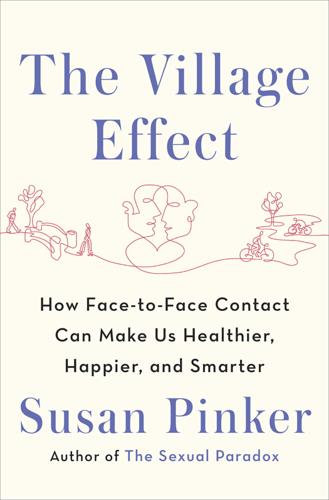
The Village Effect: How Face-To-Face Contact Can Make Us Healthier, Happier, and Smarter
by
Susan Pinker
Published 30 Sep 2013
; Mark Warschauer and Tina Matuchniak, “New Technology and Digital Worlds: Analyzing Evidence of Equity in Access, Use, and Outcomes,” Review of Research in Education 34, no. 1 (2010). 38. Jeff Patzer, “Are Laptops the Most Important Thing?” [blog], 2010. 39. All figures from the OLPC website. 40. J. Hourcade et al., “Early OLPC Experiences in a Rural Uruguayan School,” in Mobile Technology for Children: Designing for Interaction and Learning, ed. A. Druin (Boston: Morgan Kaufmann, 2009); Pierre Varly, “Evaluations in One Laptop Per Child: What For? What Has Been Done, What Could Be Done?” in Varlyproject: A Blog on Education in Developing Countries, October 16, 2010. 41. U.S. Department of Labor, Bureau of International Labor Affairs, U.S.
…
With access to a computer and the web at her fingertips, each child would learn at her own level. Books, not to mention classrooms, would soon be obsolete, one teacher told me, and her second-grade students needed to adjust right away. Digital and especially mobile technology would go where no teacher had gone before. On the international scene, the One Laptop Per Child (OLPC) project envisioned a digital utopia in which all kids in developing countries would be online. Spearheaded by Nicholas Negroponte, one of the founders of the MIT Media Lab, the project aimed to put a new low-cost, networked laptop in the hands of every child over six around the world. The idea was that given a computer, children from impoverished or remote communities would teach themselves and their families how to use it.
…
Carlo Rotella, “No Child Left Untableted,” New York Times Magazine, September 15, 2013. 35. Mark Warschauer and Morgan Ames, “Can One Laptop Per Child Save the World’s Poor?,” Journal of International Affairs 64, no. 1 (2010). 36. Ibid.; Nicholas Negroponte, “No Lap Un-topped: The Bottom Up Revolution that Could Re-define Global IT Culture,” NetEvents Global Press Summit, Hong Kong, 2006; Seymour Papert, “Digital Development: How the $100 Laptop Could Change Education,” USINFO Webchat, http://www.olpctalk.com/seymour_papert/seymour_papert_usinfo.html. 37. Warschauer and Ames, “Can One Laptop Per Child Save the World’s Poor?”; Mark Warschauer and Tina Matuchniak, “New Technology and Digital Worlds: Analyzing Evidence of Equity in Access, Use, and Outcomes,” Review of Research in Education 34, no. 1 (2010). 38.
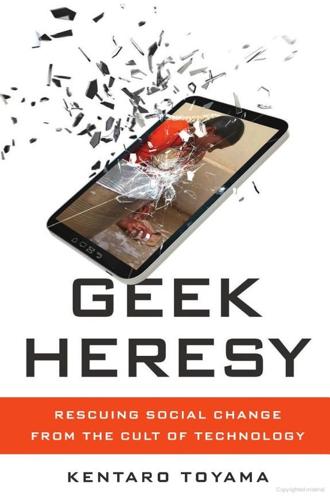
Geek Heresy: Rescuing Social Change From the Cult of Technology
by
Kentaro Toyama
Published 25 May 2015
The term was quickly extended to global disparities, and soon bridging the digital divide became a rallying cry. One response was to develop low-cost technologies – to make things only rich people could own affordable for everyone. This was the idea behind One Laptop Per Child. Its early media buzz was based on a projected $100 price tag.21 The Indian government rejected OLPC and proposed instead its own low-cost tablet, the Aakash, for $35.22 And as early as 1999, there was Free-PC in the United States. The company offered PCs for $0; they were paid for by on-screen advertising. Free-PC was discontinued, and the other products never hit their target prices.
…
See also Village Health Works Nonprofit organizations Development Alternatives organization, 199 Innovations for Poverty Action, 212, 223 Seva Mandir, 77–82, 223, 240–241(n14), 240(n10) Stree Jagruti Samiti, 17–18 Technology Access Foundation, 114–119, 162, 224 Village Health Works, 207, 224 See also Ashesi University; Digital Green; Mentorship; Pradan organization; Shanti Bhavan school Norris, Pippa, 181 Northwest School, Seattle, Washington, 119–121 Norway development assistance, 190 resource curse and Dutch disease, 259(n10) Nuclear plant disaster, 235(n29) Numeracy, 27–28 Nussbaum, Martha, 274–275(n4) Obama, Barack, 42, 89, 170 Obesity, 52–53, 235(n32) Olojede, Dele, 63 One Laptop Per Child (OLPC) program, 5, 8, 15, 48, 64–65, 227(n4), 227(n10), 238(n26) Oppenheimer, Todd, 10, 228(n17) Opportunity, rhetoric of, ix–xii, 71, 170, Opportunity International, 71 Orwell, George, 51, 75 Packaged interventions abstract ideas and institutional structures as, 62–63 alternative terminology, 236(n1) amplifying human forces, 57, 66–68, 273–274(n25) attempts to bypass curse of, 77–92 critique, 57–73, 194–195 critical complement to, 66–68, 70–73, 111–112, 124, 206–208 curse of, 68–70, 77 cynicism, 247(n14) defining, 57 effective use of, 108–109, 124 elections as, 62–63 excluded actions and programs, 70–73 expenditures, 72 failure to explain global social change, 179 heart, mind, and will qualities, 111–112 incomplete solution, 71–73 intent and capacity of individuals and institutions, 66–68 intrinsic growth through, 206–208 Iron Law of Social Programs, 69–70 laws and policies as, 63–64 mentorship versus, 204 measurement fetish, 91–92 race and gender equality, 63–64 randomized controlled trials, 80–82 recommendations for, 108–109, 124 systemic obstacles, 68–69 technology as special case, 57 vaccines, 64–65 See also Digital Green; Gamification; Microcredit Pakistan: India’s high-tech economy, 183 Pal, Joyojeet, 4, 227(n1) Pan, Jennifer, 49 Panacea, technology and packaged interventions as, 58, 70, 73, 104, 143, 228(n13), 255(n39).
…
The Myth of the Machine: Technics and Human Development. Harcourt, Brace and World. Murphy, Tom. (2014a). Do TOMS shoes harm local shoe sellers? Humanosphere, Sept. 16, 2014, www.humanosphere.org/social-business/2014/09/toms-shoes-harm-local-shoe-sellers/. ———. (2014b). Is this the nail in the One Laptop Per Child coffin? Humanosphere, Sept. 30, 2014, www.humanosphere.org/basics/2014/09/nail-one-laptop-per-child-coffin/. Narayan, Deepa, Robert Chambers, Meera Kaul Shah, and Patti Petesch. (2000). Voices of the Poor, vols. 1–3. Published for the World Bank. Oxford University Press. National Center for Charitable Statistics. (2010). Number of nonprofit organizations in the United States, 1999–2009, http://nccsdataweb.urban.org/PubApps/profile1.php?

The Cultural Logic of Computation
by
David Golumbia
Published 31 Mar 2009
As children appropriate a global information resource, and as they discover that only adults need learner’s permits, we are bound to find new hope and dignity in places where very little existed before.”8 It is also no surprise that Negroponte now spearheads a worldwide effort to distribute computers to children (the One Laptop Per Child program, or OLPC) that can also be seen as realizing a desire to propagate computationalism, and in this mode emerges not from a prior base of interest in the social and economic problems of the world’s most marginalized people, but instead from the intuitions of computer users and developers about what it is like to engage deeply with the machine.9 The closing words of Negroponte’s best-selling book completely lack exemplary support, and with good reason.
…
If the letter forms change so often when writing that one can scarcely determine a fixed set of forms to encode, computationalist ideologies suggest, maybe it would be better to just leave them off the computer altogether. There are few more obviously disturbing applications of such thinking than in the One Laptop Per Child (OLPC) project spearheaded by Nicholas Negroponte. This project, which promises to give many of the world’s disadvantaged children inexpensive laptops which they can use freely for any kind of education, has much to recommend it and yet on cultural grounds seems highly disturbing. There could be almost no more efficient means of eradicating the remaining non-Western cultures of the world than to give children seductive, easy-to-use tools that simply do not speak their languages.
…
America by Design: Science, Technology, and the Rise of Corporate Capitalism. New York: Knopf. ———. 1997. The Religion of Technology: The Divinity of Man and the Spirit of Invention. New York: Penguin Books. Nye, David E. 2003. America as Second Creation: Technology and Narratives of New Beginnings. Cambridge, MA: The MIT Press. References p 245 OLPC. 2008. “One Laptop Per Child: Vision: Mission.” http://www.laptop.org. O’Gorman, Bill. 2004. “The Road to ERP: Has Industry Learned or Revolved Back to the Start?” In Adam and Sammon (2004), 22–46. Ong, Walter S. J. 1977. Interfaces of the Word: Studies in the Evolution of Consciousness and Culture. Ithaca, NY: Cornell University Press. ———. 1982.

Artificial Unintelligence: How Computers Misunderstand the World
by
Meredith Broussard
Published 19 Apr 2018
You must get this entire infrastructure up and running, then maintain it 24-7 for the indefinite future, plus adopt new technologies as they arise. You must do this with minimal trained staff, minimal budget, and a tiny salary. The challenges don’t stop there. As teachers and administrators learned from the $20 million One Laptop Per Child (OLPC) initiative announced in 2005, simply handing students laptops doesn’t mean they will use them for education. An OLPC deployment in Paraguay found that unless there were specific instructions given for how the computers should be tied into curricular activities, both teachers and students merely used the laptops for recreational purposes like playing games or watching videos.4 Teachers needed training and support in order to integrate computers into their lesson plans—and even then, the logistical problems (breakage, loss, etc.) proved to be insurmountable obstacles.
…
FEC, 180 McIntyre, Tim, 170 McNamee, Roger, 138 Mercedes, 144 Merideth, Willie, 68 Meyer, Philip, 43 Microsoft, 25, 157 Minimum viable product (MVP), 189–190 Minsky, Margaret, 79 Minsky, Marvin, 69–75, 79–80, 81, 84, 89, 129, 132, 145, 193 MIT Artificial Intelligence Lab, 70 Mitchell, Tom M., 92 MIT Media Lab, 70, 72, 195 MIT Tech Model Railroad Club (TMRC), 69–70 Models, mathematical, 94 Monty Python, 89 Moore School of Engineering, 196–198 Morais, Betsy, 167 Mortensen, Dennis, 132 Motor vehicle traffic-related injury mortality, 137–138 Mullainathan, Sendhil, 155–156 Munro, Randall, 87 Murdoch, William, 116 Musk, Elon, 142, 143–144 Naming problem, 88–89 Natanson, Hannah, 84 National Highway Traffic Safety Association (NHTSA), 133–134 Natural resources homework, 51–52 Navy, U.S., 137 Neumann, John von, 71 Neural networks, 33 Neville-Neil, George V., 92–93 New Communalism movement, 5 Newman, Barry, 152 Newspapers, 152 New York Times, 152 NeXt cube, 5 NICAR conference, 196 Nineteenth Amendment, 78 Northpointe, 155–156 Norvig, Peter, 93, 118 Nutter, Michael, 53 NVIDIA, 140–141 Obama Administration, 147, 194 Object, 97 O’Neil, Cathy, 94 One Laptop Per Child (OLPC) initiative, 65 oN-Line System (NLS), 25 OpenBazaar, 159 Operating systems, 24–25 Opioid crisis, 158–160 O’Reilly, Tim, 81 OSX, 25 Otto, 142 Overview Project, 52 Page, Carl Victor, Sr., 72–73 Page, Larry, 72–73, 131, 151 PageRank, 72, 151–152 Palantir, 83 Panama Papers, 196 Pandas library, 97 Paperclip theory, 89–90 Papert, Seymour, 72, 73 Pasquale, Frank, 115 Pattis, Richard, 129 PayPal, 83, 159 Pearson, 53–54 Penn and Teller, 70 Pennsylvania System of School Assessment (PSSA), 52, 53–54 Pereira, Fernando, 118 Personal computer revolution, 5, 24 Philadelphia School District, 53–60, 65–66 Physicians, sexual abuse by, 42–43 PillyPod, 173 Pinker, Stephen, 90 Pinkerton, Emma, 164 Pizzafy, 165, 168–174 Policing quantitative methods to enhance, 155 racial disparities found by Stanford Open Policing Project, 43 speeding, 43 PolitiFact, 45–46 Popular vs. good, 149–152, 160 Poverty and differential pricing, 116 Prater, Vernon, 155 Predictive analytics, 33 Price discrimination, 46 Price optimization, 114–115 Privacy, right to, 68, 195 Programmers accountability for, 154 bias, 155–158 competence, developing, 169–170, 174 drug use, 158–159 ethical training, 145 income, 170–171 safety, attitudes toward, 73–74 social conventions, 74–75 Programming.
…
Broussard, “Why E-books Are Banned in My Digital Journalism Class”; Wästlund et al., “Effects of VDT and Paper Presentation on Consumption and Production of Information”; Noyes and Garland, “VDT versus Paper-Based Text”; Morineau et al., “The Emergence of the Contextual Role of the E-book in Cognitive Processes through an Ecological and Functional Analysis”; Noyes and Garland, “Computer- vs. Paper-Based Tasks”; Keim, “Why the Smart Reading Device of the Future May Be … Paper.” 4. Ames, “Translating Magic.” 5. Kraemer, Dedrick, and Sharma, “One Laptop per Child”; Purington, “One Laptop per Child.” 6. Broussard, “Why Poor Schools Can’t Win at Standardized Testing.” 7. School District of Philadelphia, “Budget Adoption Fiscal Year 2016–2017.” 6 People Problems It may seem like ideas about education and digital technology stem from many different authors and thinkers, but digging deep reveals that most such ideas come from a single small group of elites who have been imagining and misunderstanding the interplay between technology and social issues since the 1950s.

Legacy: Gangsters, Corruption and the London Olympics
by
Michael Gillard
Published 24 Jul 2019
I think the feeling we have had is that we’ve been used to leverage a higher offer or a better offer from West Ham Newham because we lost so badly. We thought we had an incredibly strong bid. We were told we failed on two of the five main criteria and we felt we didn’t at all, that they had made a decision and worked back to try and justify it.’3 Over the next few weeks, legal letters dropped through the mailboxes of the OLPC, Boris Johnson, Newham council and West Ham, threatening court action if answers were not forthcoming about the decision-making process. Meanwhile, according to a Tottenham insider, a report by Hill on the new owners of West Ham was causing Levy to think hard about whom he was taking on. David Sullivan and David Gold had become multi-millionaires through separate and joint adventures in the sex business and then as owners of Birmingham City football club.
…
The trio of Sullivan, Gold and Brady were now firmly in the sights of Levy, who had replaced Sugar as chairman of Tottenham in 2001. When Tottenham got no satisfactory answers to its legal letters, in April 2011 the club launched judicial reviews in the high court, which put a major spanner in the OLPC’s legacy plans. The handover to West Ham had to be suspended because Levy was questioning the integrity of the process, particularly whether Newham council had acted correctly in getting access to a £40 million loan of public money. The following month, Tottenham upped the ante by seeking to judicially review the decision of the OPLC, the mayor of London and the minister of sport in making West Ham the preferred bidder.
…
At 4.52 p.m. on 16 May, NatWest Bank faxed over Knight’s statements from 23 December 2010 to 28 April 2011, the crucial period before and after the OPLC’s bid decision. Among the humdrum withdrawals of everyday life, two types of deposit into her bank account caught Hill’s eye. The first was Knight’s monthly salary of just under £5,000 from the OLPC. The other was a series of deposits from ‘West Ham United’. Over the four-month period, West Ham had deposited £9915.31 into her bank account – £1,900 in the month before the stadium decision and £8,000 afterwards. Hill also discovered another payment of £4,800 from West Ham in June. There were also regular deposits, described as ‘loan repayments’ totalling £2,248, from Tompkins’ Halifax bank account.

Whiplash: How to Survive Our Faster Future
by
Joi Ito
and
Jeff Howe
Published 6 Dec 2016
Some of its projects have involved building the network itself—like DonkeyNet (yes, literally using donkeys to provide “drive-by” Wi-Fi for remote communities) followed by DakNet, a collaboration that served as a “‘electronic postman for India.” Other past efforts have focused on mobile diagnostics or tools for rural health workers, or on hardware, including the One Laptop per Child (OLPC) project, which designed a low-cost laptop and later a tablet to provide computers to children all over the world.20 In the past several years, the Media Lab has attempted to move closer to a model that envisions the Lab as more of a platform that uses extensive networks—one that is connected to the global community and welcomes ever-more diverse inputs.
…
The Lab is expanding its work with charitable foundations, individual philanthropists, and local communities around the globe through efforts such as the Director’s Fellows program, which has created a network of fellows across geographies and fields from Libya to Detroit, from chess grandmasters to Buddhist monks. While past projects like DakNet and OLPC provided avenues for much-needed connectivity, the Director’s Fellows are part of an expanding network of human knowledge and initiative. Embracing a systems-over-objects approach helps us encode the principle that every scientific or technological intervention must consider its effect on the entire global network.

Smart Cities: Big Data, Civic Hackers, and the Quest for a New Utopia
by
Anthony M. Townsend
Published 29 Sep 2013
Innovations, 245 NYCwireless, 126–34, 174–75 O’Bryant, Richard, 174 Occupy Wall Street, 133, 226 Odendaal, Nancy, 178 OECD (Organisation for Economic Co-operation and Development), 288 O’Hagan, John, 80 Olivetti, 137 Olympic Games: Summer 1996, 66 Summer 2016, 66 O’Malley, Martin, 211 O’Neill, Tip, 212 One Laptop Per Child (OLPC), 177, 188, 190 open-data legislation, 228 Open Plans, 158, 228, 307 open source: advocates of, 126–34, 209, 223, 237, 241, 291 in computer language, 124 for empowerment of poor, 186–89 model transparency in, 296 systems using, 156, 158–59, 293 OpenStreetMap, 187 operational planning, 67 Opower, 41–42 Web 2.0 conference of, 237 O’Reilly, Tim, 237, 241 “government as a platform” idea of, 241–42 O’Reilly Media, 237 Orwell, George, 275–76 Osgood, Chris, 213–16 Osorio, Carlos Roberto, 67–68 O’Sullivan, Dan, 136 Ouroussoff, Nicolai, 106 outside.in, 155 Owen, David, 278 Paes, Eduardo, 66–68, 223–24 Pahlka, Jennifer, 237–43, 291 Pakistan, 233 Palmisano, Sam, 62–63, 68, 223–24 PalmPilot, 121–22 Panasonic, 127 Panopticon, 13 Paris, bicycle sharing in, 11 ParkNOW!
…
“[T]he Lincos container was the brainchild of a group of Western and Western-trained technocrats,” concluded researchers Paul Brand and Anke Schwittay in 2006, “They did not include indigenous designs, materials or needs into their broader design methodology, and the product of this methodology was ultimately rejected by the constituents the designers were supposed to serve.”9 A Computer for the Rest of Us Undeterred by Lincos’s failure, in 2005 MIT Media Lab cofounder Nicholas Negroponte announced an ambitious project, One Laptop Per Child, with a bold goal: to deploy millions of laptops to children in the developing world, for less than $100 per unit. By 2012 the group had shipped some 2.5 million computers to more than forty countries.10 Despite many setbacks, the project was considered a success by many, having spurred the development of a whole new class of low-cost laptops—netbooks.
…
As Hagen described Map Kibera in a 2010 article, “It is founded on the premise that the advent of the digital age means that gatekeepers to information and data can often be bypassed or ignored completely, allowing for a new and sometimes parallel information system to be created and used by marginalized citizens.”42 Since the 1990s, ICT4D projects mostly operated on an approach that Richard Heeks calls “pro-poor.” As he puts it, in projects like One Laptop Per Child, “innovation occurs outside poor communities, but on their behalf.” Truly sustainable solutions require people to participate in a project’s design and implementation. Heeks calls this model “para-poor”: outsiders work alongside members of poor communities in “participative, user-engaged design processes.”43 As the movement evolves, and technologies like the mobile phone trickle down, Heeks envisions a second shift to “per-poor” innovation, done entirely by and for the poor.
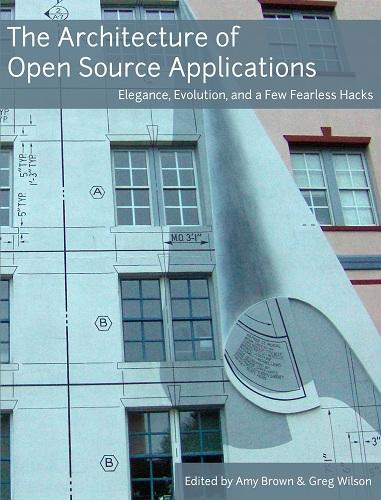
The Architecture of Open Source Applications
by
Amy Brown
and
Greg Wilson
Published 24 May 2011
isRemote) { SocialCalc.Callbacks.broadcast('execute', { cmdstr: cmdstr, saveundo: saveundo }); } // …original ScheduleSheetCommands code here… } Now all we need to do is to define a suitable SocialCalc.Callbacks.broadcast callback function. Once it's in place, the same commands will be executed on all users connected to the same spreadsheet. When this feature was first implemented for OLPC (One Laptop Per Child2) by SEETA's Sugar Labs3 in 2009, the broadcast function was built with XPCOM calls into D-Bus/Telepathy, the standard transport for OLPC/Sugar networks (see Figure 19.16). Figure 19.16: OLPC Implementation That worked reasonably well, enabling XO instances in the same Sugar network to collaborate on a common SocialCalc spreadsheet. However, it is both specific to the Mozilla/XPCOM browser platform, as well as to the D-Bus/Telepathy messaging platform. 19.7.1.
…
For example, someone's implementation of XEP-0016 privacy lists might implement an interface named com.example.PrivacyLists. The method then returns a D-Bus object provided by the plugin, which should implement that interface (and possibly others). The object exists alongside the main Connection object (hence the name sidecar, like on a motorcycle). The History of Sidecars In the early days of Telepathy, the One Laptop Per Child project needed to support custom XMPP extensions (XEPs) to share information between devices. These were added directly to Telepathy-Gabble (the XMPP Connection Manager), and exposed via undocumented interfaces on the Connection object. Eventually, with more developers wanting support for specific XEPs which have no analogue in other communications protocols, it was agreed that a more generic interface for plugins was needed. 20.7.
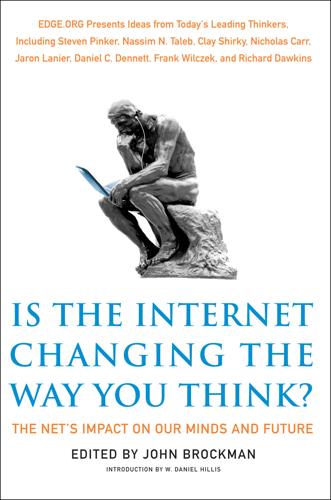
Is the Internet Changing the Way You Think?: The Net's Impact on Our Minds and Future
by
John Brockman
Published 18 Jan 2011
As dawn comes for a fraction of humanity, the Problem is present on their computer screens—but some of it has been chipped away by armies of fellow workers who, by this time, are sound asleep. Day and night, without interruption, the Earth’s rotation cranks away at the Problem until it is solved. Such giant utopian or Borgesian projects do in fact already exist: Wikipedia, Linux, SourceForge, OLPC (One Laptop per Child). They are beyond the scope, or even the imagination, of any single human being. Nowadays open-source development moves around in the infosphere and is being improved constantly on whatever side of the planet happens to be in sunshine (and often on the other side as well). There is grandeur in this new way of computer life, where the normal sleep-wake cycle is replaced by the constant churning of silicon and mind.

CIOs at Work
by
Ed Yourdon
Published 19 Jul 2011
I mean, you’re talking socially, you know, having been in the military, my son was in Iraq for a year. The impact of technology can have to help the world. I was real proud that the “one laptop per child” concept originated out of MIT Media Labs and [Nicholas] Negroponte. Yourdon: Right. Mooney: And you know, it’s taken off but not to the level probably that we would have wished, but we actually got involved in that and started putting content on the OLPC computer. And the idea included everything from using solar energy to help generate enough electricity for the computer and those kinds of things. It was just fascinating.

Rationality: From AI to Zombies
by
Eliezer Yudkowsky
Published 11 Mar 2015
And your friend says, “But think of the employment that this will provide—to the laptop maker, the laptop maker’s advertising agency—and then they’ll buy meals and haircuts—it will stimulate the economy and eventually many people will get their own laptops.” But it would be even more efficient to buy 5,000 One Laptop Per Child laptops, thus providing employment to the OLPC manufacturers and giving out laptops directly. I’ve touched before on the failure to look for third alternatives. But this is not really motivated stopping. Calling it “motivated stopping” would imply that there was a search carried out in the first place. In The Bottom Line, I observed that only the real determinants of our beliefs can ever influence our real-world accuracy, only the real determinants of our actions can influence our effectiveness in achieving our goals.
…
The mirror challenge for decision theory is seeing which option a choice criterion really endorses. If your stated moral principles call for you to provide laptops to everyone, does that really endorse buying a $1 million gem-studded laptop for yourself, or spending the same money on shipping 5,000 OLPCs? We seem to have evolved a knack for arguing that practically any goal implies practically any action. A phlogiston theorist explaining why magnesium gains weight when burned has nothing on an Inquisitor explaining why God’s infinite love for all His children requires burning some of them at the stake.
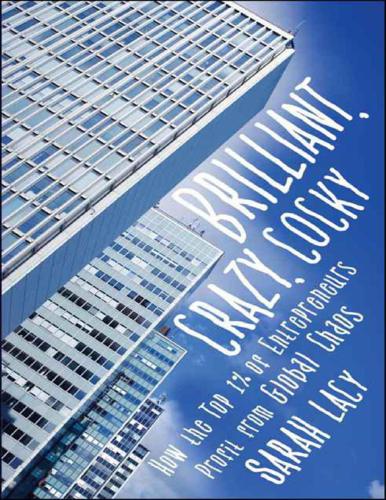
Brilliant, Crazy, Cocky: How the Top 1% of Entrepreneurs Profit From Global Chaos
by
Sarah Lacy
Published 6 Jan 2011
Not only does Rwanda have four bars of cel phone reception even in the poorest, most mountainous areas, but throughout the countryside huge spools of fiber-optic cables line the roadside, while workers dig deep trenches. By the time this book is published, the entire country wil be connected by high-speed fiber-optic lines— a boast the United States can’t make. Rwanda has one of the more ambitious One Laptop Per Child programs, and already more than 100,000 school kids have the rugged bright green laptops, with plans to distribute them to half of its 2.5 mil ion children in the next few years. Government forms are increasingly processed online, and Nkubito Manzi Bakuramutsa, Rwanda’s deputy CEO of the Development Board in charge of information technology, looks forward to a day when even the milking of cows is automated by technology.
…
How do you bring mil ions of people to justice for kil ing a mil ion of their neighbors and stil have a country to rebuild? International aid workers champion what Kagame has pul ed off. Paul Farmer, of Partners in Health, cal s him a great man. He moved his family to Rwanda, because of the support Kagame gave him in delivering health care to the poor. One Laptop Per Child founder Nicholas Negroponte told Time, “What is different about Rwanda is Paul Kagame’s long-standing belief in us and us in him. We wil walk to the end of the earth to help him and Rwanda. We want Rwanda to be a showcase.”3 Kagame isn’t a saint. As a general in a land of chaos, he’s responsible for kil ing a lot of people.
…
“If innovation is part of the hal mark of America, part of what we’re trying to do is bring that to other nations.” We’d just been airlifted by the military into La Macarena and visited the John F. Kennedy School, a large open-air classroom on the edge of the jungle, where every child had a smal , rugged laptop from the One Laptop Per Child program. At first glance, the rows of children in their uniforms and bright green-and-white computers was a stunning visual of the digital divide being bridged, until they told us the area didn’t have Internet access, making al those computers a lot less useful. But that problem was easy.
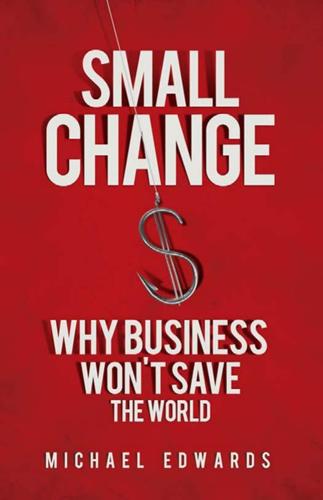
Small Change: Why Business Won't Save the World
by
Michael Edwards
Published 4 Jan 2010
the good, the bad, and the ugly 31 the bad Less good, and merging into bad, is corporate social responsibility, or at least those parts of CSR that are closer to windowdressing than substantive reform — for example, Coca-Cola, releasing its first review of corporate responsibility at the same time as contaminating water supplies in India; Intel, which exited the One Laptop per Child project because of “philosophical differences” that turned out to be a more basic desire to protect its market for higher-priced hardware and more profits for itself; Walmart, now selling environmentally friendly light bulbs and the like but still engaged in “wage theft” (depressing living wages by withholding benefits and opposing unionization), as author Kim Bobo puts it; and a whole raft of oil companies, mining companies, supermarkets, and others whose performance in CSR doesn’t match their public statements.28 As in these examples, too much CSR is a case of one step forward, two steps back, giving with one hand and taking with the other.
…
Examples include Think.MTV.com, an online community that serves as a platform for youth activism; Jeff Skoll’s Participant Productions, which finances profitable movies with a message; video games with more positive algorithms; free channels for civil society groups on YouTube and other Web sites; RealBenefits in Boston, which produces software that enables families to access government aid with less bureaucracy; SunNight Solar, which produces solar-powered flashlights and sells them at a discount; the One Laptop Per Child program, which manufactures cheap computers running on open source software with help from Google and others in Silicon Valley; low-cost, self-adjustable glasses invented by Josh Silver, a retired Oxford professor of physics; Benetech, which is developing software to allow front-line human rights workers to record abuses in a way that is both automatically encrypted for security purposes and sufficiently rigorous to hold up in legal proceedings; and PATH in Seattle, which is partnering with TEMPTIME and the World Health Organization to manufacture vaccine vial monitors that will tell health workers whether vaccines can be used.
…
See also Ponzi scheme Make the Road New York, 10, 11, 77 index Malaria bed nets and, 36 Mandela, Nelson, 30 Market regulation, 6 McKinsey and Company, 39, 52 Menon, Lakshmi, 43 Micro-Credit Ratings International Ltd., 73 Microcredit, 40 Microfinance, 40 Microsoft, 29, 30, 72 Mondragon, 22 Morino, Mario (quoted), 5 Movement Strategy Center, 13 MTV.com, 44 Multinational companies versus mom-and-pop stores, 17 Munger, Charles (quoted), 2 N National AIDS Control Organization, 39 National Center for Social Entrepreneurs, 47 National Committee for Responsive Philanthropy (NCRP), 90–91 Nature Conservancy, The, 51 NCRP (National Committee for Responsive Philanthropy), 90–91 New business models, 21–22 New Deal, 23 New Philanthropy Capital (NPC), 79 Nightingale, Florence, 19 Nilekani, Nandan, 3 Nilekani, Rohini, 74 Nonmarket peer production, 22 Nonprofit Quarterly, 51, 57–58 Novogratz, Jacqueline, 8 121 O Obama, Barack, 6 Omidyar Network, The, 30, 104 Omidyar, Peter, 7, 89 One Laptop Per Child, 31, 44 Oracle, 2 P Parent Teacher Associations (PTAs), 54 Participant Productions, 19, 44 PATH, 44 Peaceworks, 30 Philanthrocapitalism as form of philanthropy, 2 civil rights and, 14 competition and, 68 focus of, 9 hype surrounding, 34 rise of, 1–6 social justice and, 73 social problems and, 36 versus social transformation, 7 Philanthrocapitalists, 2–3, 78.

The Future Is Faster Than You Think: How Converging Technologies Are Transforming Business, Industries, and Our Lives
by
Peter H. Diamandis
and
Steven Kotler
Published 28 Jan 2020
For decades, Negroponte has been trying to answer this question. He’s been the leading voice for an unusual idea: Children, armed only with a laptop loaded with educational apps and games, could teach themselves to read and write while also learning how to navigate the internet. Years earlier, to advance this cause, he’d founded the nonprofit One Laptop per Child, with the goal of building a $100 tablet computer that could be put into the hands of children in need. Still, questions remained: Was a cheap tablet sufficient to solve this problem? How much teaching and direction would kids actually need? Could children teach themselves simply by playing with the apps and games?
…
Mitra’s work shows that functional illiteracy isn’t a barrier to computer literacy. In his studies, children in India’s slums were given access to a net-connected computer. Very quickly, they learned to use the equipment, surf the Web, and teach themselves the basics of reading and writing. Negroponte’s Ethiopia experiment went further. What excited the One Laptop per Child team was how the tablets unlocked self-directed learning and creativity, and more importantly, how technologically sophisticated the kids had to become, on their own, to unlock those skills in the first place. “The kids had completely customized the desktop,” Ed McNierney, the nonprofit’s CTO, told the MIT Review, “so every kid’s tablet looked different.
…
One Billion Android Teachers Per Year In 2012, Nicholas Negroponte: David Talbot, “Given Tablets but No Teachers, Ethiopian Children Teach Themselves,” MIT Technology Review, October 29, 2012. See: https://www.technologyreview.com/s/506466/given-tablets-but-no-teachers-ethiopian-children-teach-themselves/. One Laptop per Child: See: http://one.laptop.org/. Negroponte told the MIT Review: Ibid. Sugata Mitra: Watch Sugata Mitra’s full “Kids Can Teach Themselves” TED Talk here: https://www.ted.com/talks/sugata_mitra_shows_how_kids_teach_themselves?language=en. Ed McNierney, the nonprofit’s CTO, told the MIT Review: Ibid.

Survival of the Richest: Escape Fantasies of the Tech Billionaires
by
Douglas Rushkoff
Published 7 Sep 2022
Whether we’re talking about a smart finance grid, biohacking, drone warfare, space colonization, or universal basic income, technosolutions are too commonly informed by the values inherent in technology itself: exponential growth, automation over human intervention, forward momentum, platformization, and a disregard for existing conditions on the ground. As a result, most moonshots turn out to be boondoggles. MIT Media Lab founder Nicholas Negroponte’s much lauded One Laptop Per Child project expected to deliver 150 million $100 laptops to children in developing countries by the end of 2007. It didn’t go as planned. Many countries weren’t sure how they would use computers in their classrooms, particularly when their teachers were not digitally literate themselves. They didn’t accept Negroponte’s if-you-build-it-they-will-come premise that all kids of all cultures are born hackers who can just figure out an easy interface for themselves.
…
Rosser, “Through the Lenses of Feminist Theory: Focus on Women and Information Technology,” Frontiers: A Journal of Women Studies 26, no. 1 (2005). 125 totalitarian surveillance state : Alexandra Ma, “China’s ‘Social Credit’ System Ranks Citizens and Punishes Them with Throttled Internet Speeds and Flight Bans If the Communist Party Deems Them Untrustworthy,” Business Insider , May 9, 2021, https:// www .businessinsider .com /china -social -credit -system -punishments -and -rewards -explained -2018 -4. 126 put Black people in jail for longer : See Cathy O’Neil, Weapons of Math Destruction: How Big Data Increases Inequality and Threatens Democracy (New York: Broadway Books, 2016). 127 only a few hundred thousand had been shipped : Namank Shah, “A Blurry Vision: Reconsidering the Failure of the One Laptop Per Child Initiative,” WR: Journal of the CAS Writing Program , https:// www .bu .edu /writingprogram /journal /past -issues /issue -3 /shah /. 127 “that are inappropriate” : Shah, “A Blurry Vision.” 127 could play only Western beats : Victoria McArthur, “Communication Technologies and Cultural Identity: A Critical Discussion of ICTs for Development,” paper presented at the IEEE Toronto International Conference: Science and Technology for Humanity, 2009, 910–14. 127 $40 million on Brigade : Micah Sifry, “Parker Bros,” Civicist , February 12, 2019, https:// civichall .org /civicist /parker -bros /. 127 hub for planning civic technology projects : Josh Constine, “Sean Parker’s Govtech Brigade Breaks Up, Pinterest Acquires Engineers,” TechCrunch , February 11, 2019, https:// techcrunch .com /2019 /02 /10 /brigade -pinterest /. 127 “a big fat nothingburger” : Micah Sifry, email interview with the author, May 27, 2021. 128 “submission of all forms of cultural life” : Neil Postman, Technopoly: The Surrender of Culture to Technology (New York: Vintage, 1993).

Utopias: A Brief History From Ancient Writings to Virtual Communities
by
Howard P. Segal
Published 20 May 2012
Instead, they point to developments they could not possibly have foreseen or simply ignore their mistakes altogether. To take a highly significant example, Negroponte has for years now been promoting the production of a one-hundred-dollar laptop for children that would supposedly transform the lives of and educate millions of impoverished souls. Genuinely committed to this non-profit crusade, called “One Laptop per Child,” he has raised huge sums of money but has been defeated by the impossibility of meeting that low cost per computer. Unexpectedly high expenses for the original laptop resulted from too many moving parts; too many features needed to “withstand glaring sun, blowing sand, and spotty access to electricity”; and customized keyboards for countries not using the Latin alphabet.
…
Bradley 92 Lane, Robert 106–107, 108, 109, 114, 117–118, 119, 122 Laos 104 Lartigue, Jacques-Henri 165 Las Vegas 36 Lasser, David 9 Last Hero, The: A Life of Henry Aaron (Bryant) 191 Latin America 102 and European ideas 21–22 indigenous cultures and movements 21, 23 liberation theology and communities 52 Spanish conquest 21 utopias in 21–23 Lawrence, Francis 212 Lea, Homer 98 278 Index League of Nations 251 Lease, Mary 98 Lee, Ann 26 Lefkowitz, Mary 171 Left Hand of Darkness, The (LeGuin) 92 legitimation crisis in US science and technology 122 LeGuin, Ursula 92 LeMay, General Curtis 105 Lemontey, Pierre Edouard 60 Lenin, Vladimir 104 Lessing, Doris 9 Levitas, Ruth 7 Levittown, Long Island 244 Ley, Willy 9 library usage 218 Life in a Technocracy: What It Might Be Like in 1933 (Loeb) 89, 106, 239, 240 limits to growth 234, 237 Literary Digest 97 “literary intellectuals” 114 “living the dream” 254 Loeb, Harold Albert 89, 90, 95, 96, 239 and politics 109 Loewy, Raymond 34 London, Jack 98 Longxi, Zhang 18 Looking Backward: 2000–1887 (Bellamy) 10, 13, 24, 27, 31–32, 34, 90, 194 attitudes toward 59–60, 254 Lost Horizon 13 Lucas, George 204 Luddites 240, 241 Maastricht Treaty 252 Machine in the Garden: Technology and the Pastoral Ideal in America, The (Leo Marx) 84 Machines as the Measure of Men: Science, Technology, and Ideologies of Western Dominance (Adas) 169 Macnie, John 82, 87 Maine and nuclear power 142–157 Maine Yankee Atomic Power Company 142–143, 145, 146–148, 149, 151 as “cargo cult” 147 closure of 148 opposition to 156–157 referenda on 147, 155 utopian and dystopian aspects 156 views of 156–157 Malthus, Thomas 63 Mandela, Nelson 171 Manhattan Project 156 “Manifest Destiny,” American 11 Manuel, Frank and Fritzie 16 Manuel, Frank 6 Mao Tse-Tung 18, 243 utopian vision 19 Mao’s Great Famine (Dikotter) 19 Maraniss, David 191 marginalizing utopias 29, 245 Marx, Karl 32, 53, 60, 66–67, 105, 250–251 Marxism 22 Marx, Leo 84, 85 Massachusetts Institute of Technology 52 Massey, Ranymond 240, 241 Mauchly, John 160 Mayer, Anna-K. 98, 114 Mbeki, Thabo, President of South Africa 171 McDonald, Michael J. 111 McIntyre, Vonda N. 9 McKinley, President William 94 McNamara, Robert 104–105, 106, 112, 113, 166 “McNamara Line” 105 Medieval Machine, The: The Industrial Revolution of the Middle Ages (Gimpel) 236 “megachurches” 11 megaprojects: and climate change 187–188 retreat from 139ff, 157 skepticism toward 141–142 taxpayer support for 122, 150 Megatrends and Megatrends 2000 (Naisbitt and Aburdene) 168 Men Like Gods (Wells) 251 mercantilism 77 Metamorphosis (Ovid) 47 Mexico 23 mice, as subjects of research 125 Micklethwait, John 11 Microsoft 158, 192 “middle landscape” 85 military technology 238 millenarian movements 8 God and millenarianism 8, 10 Christians and millenarianism 8, 10 Judaism and millenarianism 8, 10 Mormonism 10 and Pansophism 54–55 and utopia 55 Miller, Lisa 12 Mitchell, General Billy 142 Mizora: A Prophecy (Lane) 92 Model T car 165 Modern Times in Maine and America, 1890–1930 191 “Modernization” theory 102ff, 114 over-reliance on technology 105 Index 279 Mojave Desert, California 151 monkeys, genetically modified 125 Montgomery, David 212 Montreal Expo 1967 246 Moon and the Ghetto: An Essay on Public Policy Analysis, The (Nelson) 117 Moon landing 139, 140, 141, 190, 200 moon landing fraud claims 141 More, Thomas 23, 42, 58, 247 coining of term utopia 5 and history 164 and utopias 251 utopia described 48–50 see also Utopia Morison, George Shattuck 89–90 Mormonism 10 Morozov, Evgeny 189 Morris, William 17, 32, 58–59, 60, 237, 254 see also News from Nowhere Mosquito Coast, The 202 Mumford, Lewis 1, 106, 245, 246 music, digitization of 221 Mussolini, Benito 98 MySpace 205 Naisbitt, John 161, 162, 168, 186 Nantucket Sound 150 NASA 7, 140 National Association of State Universities and Land-Grant Colleges (NASULGC) 213–214 National Park Service 238–239 National Science Foundation (NSF) 99, 100, 115 Native Americans 81 natural user interface 220 Nazi Germany 104, 244 Nazism and utopia 188 280 Index Negroponte, Nicholas 161–162, 163, 186 Nehru, Jawaharlal 172 Nelson, Richard 117 Neo-Confucian thought 19–20 Net Delusion, The: The Dark Side of Internet Freedom (Morozov) 189 Neumann, Franz 109 Neumann, John Von 160 New Atlantis, The (Bacon) 53, 251 Condorcet on 56 New Christianity, The (Le Nouveau Christianisme) (SaintSimon) 57 New Deal 106, 159 New England 3, 24, 27, 147, 150, 156, 249 New Harmony, Indiana. settlement at 60 New Lanark Mills, Scotland 60, 62, 64 New View of Society A (Owen) 62 New World and Old World compared 24, 244 New World Order 242 New World, The; Or, Mechanical System to Perform the Labours of Man and Beast by Inanimate Powers, that Cost Nothing (Etzler) 78 New York City’s New School for Social Research 97 New York Public Library 242, 245, 254 New York World’s Fair World of Tomorrow 1939–1940 164, 240 News from Nowhere (Morris) 17, 32, 59–60, 237 newspapers and digital media 218, 221–222 Newton Message Pad 219 Newton, Isaac 55, 219 Nexi the robot 126 Nixon, President Richard 108, 155 Noble, David F 187, 190, 207, 216 non-utopian reform 244 North Americans, early European perceptions of 244 North Vietnam 105–106 Not Out of Africa: How Afrocentrism Became an Excuse to Teach Myth as History (Lefkowitz) 171 Noyce, Robert 158 Noyes, John Humphrey 10, 27, 28 nuclear industry: France 152 Germany 152 Japan 152 US 142–156 nuclear power 142–157 being “too cheap to meter” 156 changing attitudes toward 146–147 experts and 155–156 leakage of tritium 153 and power station decommissioning 148, 149–150 possibility of disaster 154–155 nuclear weaponry 187 Nuclear Regulatory Commission (NRC) 148, 149, 153, 154 Nutty Professor, The 201 Nye, David 81, 168, 169, 190, 237 Nyhan, David 148–149 O’Neil, Gerard 9 Obama, President Barack 140, 151 Office of Science and Technology Policy 108 Office of Technology Assessment (OTA) 117–119, 121 One Laptop per Child 161 Oneida community 10, 24, 27–28 daughter communities 28 open marriage in 27, 199 Oneida Limited 28 “Oneida Perfectionists” 28 ordinary readers and utopian writings 11, 139, 254 Organization Man, The (Whyte) 114–115 original sin 8 Orwell, George 14, 124, 166 Other America, The (Harrington) 101 Ovid 47 Owen, Robert 53, 60–64, 66, 67 and drawbacks of industrialization 62 influence on Japan 196 utopian plans 62–63 see also New Harmony, Indiana, New Lanark Mills ozone layer, monitoring of 121 pacifism 26 Packard, David 158 Page, Larry 158 Palestine 25, 35 Pansophists 48, 52, 53–55 Paradise Within the Reach of All Men, Without Labor, By Powers of Nature and Machinery, The (Etzler) 79 parents, children, and technology 239 Paris exposition 1937 35, 251–252 Paris Peace Conference 1919 251 Paris World’s Fair 1900 251, 253 Pasteur, Louis 120–121 Index 281 Pasteur’s Quadrant: Basic Science and Technological Innovation (Stokes) 120 patriot missiles 238 Peale, Norman Vincent 168, 208 Pelle, Kimberly 36 Pentagon 109 People of Plenty: Economic Abundance and the American Character (Potter) 101 Performance Measurement for World Class Manufacturing 212 Perrin, Noel 234, 235 Perry, Commodore Matthew 20 Persian Gulf War 1991 238 Pew Forum on Religion and Public Life 11–12 Pew Research Center for the People 116 phalansteries 29, 64–65 Physics of Star Trek, The (Krauss) 202 Picasso, Pablo 35, 252 Piercy, Marge 92 Pilgrims, US 24 Pindar 47 Plato 13, 47, 48, 50, 123 podcast 218–219 Point East Maritime Village, Wiscasset 150 Pol Pot 243 “Politics of Consensus in an Age of Affluence, The” 106 politics, affluence, and knowledge 106–107 significance of political power 109 Positivism 58 Post Shredded Wheat 191 post-9/11 period 142 “post-colonial” critique of Western imperialism 169–173 post-Millennialists 8, 27 282 Index post-modern skepticism and relativism 160 Postrel, Virginia 161, 164, 186 post-World War II period, beliefs, and projects 160 Potter, David 101, 102 poverty and progress 82 Prague Spring 1968 268 Prakash, Gyan 171, 172 Preface to Democratic Theory, A (Dahl) 106 pre-Millennialists 8 Press and the American Association 116 primitivism 92 Productivity for the Academic World 212 Productivity Press 212 professional forecasting 160–169 failures of 160–161 Progress and Poverty (George) 82 proletariat 66 public faith in government and scientific-technological advance 113 Puffer, Erma 145 Puritans, US 24 “Quick Technological Fixes” 107–108, 117 Quindlen, Anna 221 racism 9, 169, 172 radiation, issues with 144–145, 155 Ramo, Simon 110–111, 112, 113, 122, 160 utopian vision of 110, 166 rationalism 55 Reactionary Modernism (Herf) 104 Read and Go 220 Reader Pocket Edition and Reader Touch Edition 220 Reagan, President Ronald 8, 108, 115, 140, 142, 248 real world and the internet 194–195 Recent Social Trends in the United States (Hoover) 102 recovery narrative 81, 237 Reevely, David 221–222 Religion of Technology, The: The Divinity of Man and the Spirit of Invention (Noble) 187 religion 169 attitudes toward belief 56 declining beliefs 11–12 freedom of religion 168 religious beliefs and utopianism 9–12, 24, 29–30, 31, 90, 96, 239 in US 25, 26, 103 Western 172 Report to the County of Lanark (Owen) 62, 63 Republic (Plato) 13, 47, 48, 50, 123 Rescher, Nicholas 239–240 Research Applied to National Needs” 115 “Returning to Our Roots” 215, 216 Revenge of the Nerds 201 revolution of rising expectations 50 Ricardson, Ralph 240 Rittel, Horst 112 Road Ahead, The (Gates) 163 Robinson, Kim Stanley 9 robotics, development of 126–127 Roddenberry, Gene 200, 201, 202 Rodriquez, Simon 22 Roebling, John 79 Roemer, Kenneth 254 Rogers, Deborah 193 Rome 1960: The Olympics that Changed the World (Maraniss) 191 Roosevelt, President Franklin 102, 159 Rosas, Juan Manuel de 22 Rostow, Walt 104, 105 Roszak, Theodore 111, 112 Rural Electrification Administration 94 Ruskin, John 58, 59, 60 Russ, Joanna 92 Rydell, Robert 36, 37 94, Saddam Hussein 11 Saint-Simon, Henri de 22, 52, 56–58, 65, 66 Sale, Kirkpatrick 117 “salvation by technology” 248 Samurai “technology assessment” 235 Sargent, Lyman Tower 16, 253 Satellite (machine developed by Etzler) 79–80, 81 Saunders, Doug 105 Schindler, Solomon 10 Schuller, Robert 168 Science Advisory Committee 106 science and technology 57 science fiction 8–9, 199–203, and utopias 201 Science in the National Interest 119–122 Science Wars” 159 “science-driven globalization” 8 Science – The Endless Frontier (V.

Zucked: Waking Up to the Facebook Catastrophe
by
Roger McNamee
Published 1 Jan 2019
Sandy had a uniquely valuable perspective on Facebook’s policies and actions relative to user data privacy and security. The child of academics in Maine, Sandy grew up wanting to be a jazz drummer. He gave that career a try, then opted for business school in pursuit of a more stable path. Sandy won a national business plan competition to recast the business model of a not-for-profit called One Laptop per Child. That success helped Sandy secure an offer from Facebook, which evolved into a newly created position focused on user privacy. In classic Facebook style, the company installed an inexperienced and untested recent graduate in a position of great responsibility, a position to which other companies would have traditionally assigned someone with meaningful relevant experience.
…
Rowe Price, 24–27 Washington Monthly essay of, 155, 159–62 Washington trips of, 111–20, 121 McSweeney, Terrell, 113–14 Médecins Sans Frontières, 178 media, 6, 17, 68, 69, 81, 105, 106, 153, 162 Medium, 47, 84 menu choices, 96 Mercer, Robert, 180–82, 197, 199 meritocracy, 44–45 Messenger, 67, 70, 85, 139, 140, 207, 232 Kids, 254 Messing with the Enemy (Watts), 94 Metcalfe’s Law, 32, 33, 36, 38 metrics, 73, 76–78, 126, 145, 206, 216 Microsoft, 25, 35, 42, 152, 154, 172–73, 261 antitrust case against, 46–47, 154–55, 286 Facebook and, 14, 15, 59–60, 65 words associated with, 231 Milk, Harvey, 22 MIT, 177 MIT Technology Review, 102 Mohan, Neal, 93 monopolies, see antitrust and monopoly issues Moonalice, 8 Facebook and, 73–75 Moore’s Law, 32, 33, 36 Morgan, Jonathon, 90 Morgan Stanley, 27, 28 Mosaic, 36, 38 Mosseri, Adam, 179 Motherboard, 229–30 Motorola, 34 MoveOn, 60, 66 Mozilla, 40 MSNBC, 133, 161 Mueller, Robert, 119, 169, 171–75 Musk, Elon, 48 Muslims, 90, 91, 126, 131, 178, 215, 254 Myanmar, 178–80, 204, 213, 215, 232, 239, 245, 254, 265, 277, 278 MySpace, 42, 55, 152 Nadella, Satya, 173 Napster, 38, 54 Narendra, Divya, 53–54 NASA, 32 Nasdaq, 71 National Venture Capital Association, 46 neoliberalism, 45, 137 Netflix, 41, 97, 105 net neutrality, 37, 120 Netscape, 27, 38, 58, 152 network effects, 47, 162, 246, 253, 284 New Knowledge, 121 news feeds, 97 Facebook, 59, 60, 68, 70, 74, 75, 88, 89, 90–91, 97, 165–66, 208–9, 243, 244, 247 News on the Web (NOW), 231 newspapers, 93, 102 Newton, Casey, 167 New York Sun, 106 New York Times, 146, 166, 180, 193, 226, 229, 282 Nielsen, 65–66 Nix, Alexander, 182, 197 notifications, 97–99, 107, 271 Nunes, Devin, 132 Obama, Barack, 90, 112, 117, 130, 166, 196, 197 Observer, 180, 181 Oculus, 139, 144, 223, 261 Onavo, 139–40 ONE campaign, 159 One Laptop per Child, 188 OpenID Connect, 158 Open Markets Institute, 136, 155, 285 open source community, 37–38, 40 Oracle, 46, 152 Orwell, George, 267 Oxford Dictionary of American English, 230–31 Page, Larry, 27 Palihapitiya, Chamath, 146–49, 152, 160 Pallone, Frank, 210 Parakilas, Sandy, 146, 161, 187–89, 191, 192, 242 Pariser, Eli, 66–67, 109 Parkland school shooting, 174 passwords and log-ins, 249–50, 271 PayPal, 48, 249 PayPal Mafia, 48 Parker, Sean, 38, 54, 55, 64, 147–49 Pearlman, Bret, 14 Pelosi, Nancy, 167, 227 personalization, 105 persuasive techniques, 17, 83–84, 96–99, 101, 106, 207, 233, 251, 257, 274 Persuasive Technology (Fogg), 83–84; see also Fogg, B.

Mongolia - Culture Smart!: The Essential Guide to Customs & Culture
by
Alan Sanders
Published 1 Feb 2016
Under Creative Commons Attribution-Share Alike 2.5 Generic license: this page © Eric Pouhier. Under Creative Commons Attribution-Share Alike 2.0 Generic license: this page, this page © Alastair Rae from London; United Kingdom; this page © П. Филатов; this page © A. Omer Karamollaoglu from Ankara, Turkey; this page © yeowatzup from Katlenburg-Lindau, Gemany; this page © One Laptop per Child; this page © Al Jazeera English; this page © Mario Carvajal from Bogotá, Colombia; this page © S Pakhrin from DC, USA; this page © Francisco Anzola; this page © Clay Gilliland from Chandler, U.S.A.; this page © mikeemesser. GNU Free Documentation License, Version 1.2: this page © Konstantin Nikiforov.
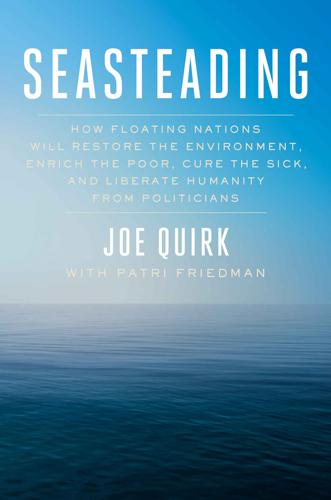
Seasteading: How Floating Nations Will Restore the Environment, Enrich the Poor, Cure the Sick, and Liberate Humanity From Politicians
by
Joe Quirk
and
Patri Friedman
Published 21 Mar 2017
Today the poor are talking on them. By 2020, 90 percent of the world’s population over the age of six will have access to a mobile phone. Not too long ago, laptops were only for rich people. Now we have solar-powered XO laptops distributed for free to 2.5 million poor children in Africa by the nonprofit One Laptop per Child in partnership with Fruit Roll-Ups. Whether it’s soap, sneakers, cotton, clothes, or cars, most technologies follow the same trend from unique to ubiquitous. Q: Aren’t seasteads for rich people only? If you were a billionaire, would you want to live on a seastead? If you were one of the bottom billion, would you want to take a blue job working a seastead algae farm?
…
S., 200 Narayana Hrudayalaya Health City, 231–32 Narayana Hrudayalaya Hospital, 227–28 National Academy of Sciences, Institute of Medicine, 222 National Aeronautics and Space Administration (NASA), 43, 79, 162, 169, 179, 186 National Centre of Competence in Research (NCCR) Digital Fabrication, 169 National Geographic (magazine), 126, 135 National Geographic (tv channel), 161 nationality principle, 14 National Marine Sanctuary Foundation, 166 National Oceanic and Atmospheric Administration (NOAA), 120, 127 National Ocean Policy Coalition, 295 National Science Foundation, 108, 118, 127 Nature, 69 Nature Conservancy, 127 Nature Geoscience, 160 Nautilus Minerals, 160 Naval Research Laboratory, US, 136 Navy Bureau of Ships, US, 24 Navy Bureau of Yards and Docks, US, 24 Necker Island, 268 Nestlé, 70 Netherlands, 20, 21, 22, 41–47, 50, 172 Newfoundland Aquaculture Industry Association (NAIA), 127 New York Times, 21, 115 NexTag, 131 Next City (magazine), 22 Nextel, 131 Next Web, 236 Nicholson, Bob, 146, 152–54 Nile River, 146 nitrogen, 69, 74, 75, 77, 83, 144–45, 156 Njihia, Mbungua, 236 Nokia, 235 Northern Hemisphere, 159 North Korea, 90, 186–88 Norway, 26, 205, 206, 261 Nothing to Envy: Ordinary Lives in North Korea (Demick), 186 Noxzema, 135 Nuehealth, 236 Nusa Lembongan, 86 Obama, Barack, 136, 271 Ober, Josiah, 281 obesity, 70 Ocean Conservancy, 128 Ocean Energy Council, 154–55 Ocean Energy Pioneer Award, 155 Ocean Farm Technologies, 119, 127 oceans: acidification of, 108–9, 133, 137 as bioeconomy, 76 contribution to economy, 17–20 repopulating with fish, 110 as solar collector, 144–49 see also aquaculture Ocean Stewards Institute, 109–10 ocean thermal energy conversion (OTEC), 54, 146–56 octopus, 261 offshore military forts, 37 Oh, Kongdan, 187 oil, see algae; biofuel; oil rigs; peak oil; seaweed oil rigs, 18–19, 23, 51, 130, 258 Okinawa, 155 Olthuis, Koen, 21, 22, 25, 26, 46, 172 omega-3 fatty acids, 75, 133 Omnivore’s Dilemma, The: A Natural History of Four Meals (Pollan), 70 One Laptop per Child, 266 1 percent graph, 185 OPEC, 129, 132 Ord, Toby, 185 Origins of Political Order, The: From Prehuman Times to the French Revolution (Fukuyama), 188 Osinga, Ronald, 88 OTEC International, 146, 152–54, 160 Outernet, 235 Outliers: The Story of Success (Gladwell), 213 Outpatients: The Astonishing New World of Medical Tourism (Issenberg), 227 oxygen, 69, 75 see also photosynthesis oysters, 93, 94, 108, 110 Pacific Institute, 68 Pacific International Center for High Technology Research, 143 Pacific International Ocean Station, 151 Pacific Investment Management Company (PIMCO), 237 Padma Bhushan (award), 240 Paideia schools, 197 Pakistan, 68, 86, 92 Palantir Technologies, 28, 29 Paley, Vitaly, 98 Palladio, Andrea, 268 Palmerston Atoll, 105 Panama, 85, 93 parasites, 47–48, 112, 113, 117, 119, 120 parrot fish, 105 Patients Beyond Borders, 222, 223 Pauley, Phil, 173 PayPal, 28, 29, 169 PBS NewsHour, 281 peak oil, 6, 65, 145 Pennsylvania, 52, 91 PeopleMatter, 131 Perception, 130 Perry, Mark J., 189 pests and pesticides, 70 Pew Charitable Trusts, 262 Philippines, 90 pH level, 108 phosphorus, 6, 52, 69, 90–91, 144 peak phosphorus, 6, 51, 302 photosynthesis, 73–74, 83, 97, 109, 122, 145 Physical Review Letters, 258 phytoplankton, 73, 150 Pimentel, David, 82, 83 pirates and piracy, 269–70 Pivot15 Challenge, 236 Planetary Resources, 160 Planetary Sustainability Collaboratory, 79 plankton, 76, 156–57 plant factory (vertical garden of vegetables), 174 plate tectonics, 161 Pollan, Michael, 70 pollution, 69, 74, 82, 84, 259 see also carbon dioxide; runoff Pond Biofuels, 136–37 pond scum, 91, 133, 135–36 Portunus (Roman god), 18 Portunus Project, 18 Poseidon Adventure, The, 272 poverty, 69, 70, 189, 198–99, 202 see also aquaculture Powell, Ken, 69 power purchase agreements (PPA), 156 Practice Fusion, 28, 131 “Predictability of Rogue Events,” 258 Prelude (floating natural gas facility), 12, 147 Princeton Hydro, 91 Project Eyes on the Seas, 262 Project Loon, 235 Project OASIS (Ocean Aquaculture for Seastead Integrated Solutions), 123, 212 Pryor, Miranda, 127 Public-Domain Architects, 44 Radulovich, Ricardo, 71–72, 75, 76–78 aquaculture, 87–88, 90, 95–96, 110 as aquapreneur, 56, 66–68, 80–81, 85–86 on blue revolution, 126–27 on photosynthesis, 73–74, 83–85 on regulations, 91–92 at Seasteading Conference, 93–97, 109 on subsidies, 93 rainforests, 53 Ramsden, Neil, 127 rare earth minerals, 159–60 Rauch, Jonathan, 290 Reagan, Ronald, 151 Redfield, Alfred C., 144 Redfield ratio, 144, 156 Red Sea, 260 refugees, 22–23 regulations: health care, 225–26, 230, 239, 241, 243–47 restrictions in aquaculture, 127 and seasteading, 55, 247–50 and special interests, 91–92 US and EU, 45, 165, 270–71 regulatory capture, 91 Rehmke, Gregory F., 280–81 Reidy, William, 18 Reignwood Group, 148 remittances, 298 Resonance Medical Technologies, 242 Réunion, 149 Revenge of Cuba (spinoff from Ephemerisle), 36 Ribozyme Pharmaceuticals, 131 rice, 78 rickets, 79 Rime of the Ancient Mariner, The (Coleridge), 72 Rise and Fall of Classical Greece, The (Ober), 281 robots, 160, 169, 171, 232 rogue waves, 161, 258–59 Roman Colosseum, 20 Rotterdam, see Netherlands Royal Caribbean International, 14–15, 264 Rudnick, Phillip, 164 Rule of Law Index, 201 runoff, 69, 74, 83, 90, 126, 134, 259 Saeme, Mohammed, 221 SAEMED, 221 Sagan, Carl, 72 Saint Martin (island), 240 St.

The Driver in the Driverless Car: How Our Technology Choices Will Create the Future
by
Vivek Wadhwa
and
Alex Salkever
Published 2 Apr 2017
The Promise of Exponential Technology for Personalized Education With the rise of the personal computer, and later, the laptop, came the promise that technology would remake education and allow us to personalize learning again. Let’s face it: one area in which technology innovation has thus far largely failed is education. First was the promise of One Laptop per Child; but proof that students using computers regularly for classwork and homework do better than those without has remained elusive. And in some major school districts, such as Los Angeles Unified, experiments in giving a tablet to each student have proven unqualified failures. Indeed, the jury remains out on computer-assisted education altogether.

Blockchain Chicken Farm: And Other Stories of Tech in China's Countryside
by
Xiaowei Wang
Published 12 Oct 2020
I ask Sun Wei his opinion about the equalizing effects of technology, if a technical position like his is liberating and will allow him to do anything he wants in the future. These equalizing effects are pervasive throughout the technology and development world, the stories of “technology transforming lives” tiresome in their ubiquity. Projects like the failed One Laptop per Child, by Nicholas Negroponte, or the Hole in the Wall project exude this techno-optimistic belief—if you can give a laptop to a child or put a computer in an Indian slum, children will teach themselves linear algebra and become the next Bill Gates. We now know this is a myth inflated by a hype cycle.

Aerotropolis
by
John D. Kasarda
and
Greg Lindsay
Published 2 Jan 2009
Besides Foxconn, for example, five firms produce 90 percent of the world’s laptops, none of which you’ve probably ever heard of: Quanta, Compal, Inventec, Wistron, and one formerly known as ASUSTeK. That began to change a few years ago, when Quanta won the contract for the so-called $100 laptop commissioned by the nonprofit One Laptop per Child. Its design was radically different, running lightweight software on a hyperefficient machine. Inspired, or maybe terrified, Quanta’s archrival ASUSTeK devised a laptop along similar lines, albeit with a sleeker look-and-feel and a price tag of $349. Instead of children, its intended audience was families in China and India.
…
.: carbon footprint of residents in, 356; cities in style of, 20–21 NextGen traffic control system, 352 Nigeria, 321 Nilekani, Nandan, 281–82, 283 NIMBY groups, 29 noise pollution: in areas around airports, 28–29, 86, 187–88; designs to reduce, 350; lawsuits regarding, 29 Nong Ngu Hao, 245 North Carolina, University of, 7, 8 Northrup, Jack, 27 Northrup Grumman, 27, 40 “nowhere,” invention of, 96–98 Obama, Barack, 18; on China’s infrastructure spending, 388; on health care reforms, 268; on new economic foundations, 37; new urban vision of, 194–95 Observer, The, 343 O’Donnell, Robert, 137 Ofa, Ilaiasi, 92, 129 O’Hare Modernization Program (OMP), 49–52; opposition to, 51 oil: consumed by transport, 341–42; urbanization dependent on, 12, 21; from whaling, 327 oil consumption, global rate of, 342 oil prices, 331, 334, 340–41 oil shocks, 341–42 Okay Airways, 403, 404–406, 407–408 Okazaki, Akira, 226 O’Leary, Michael, 335 Olympics, Beijing, 386, 406 Omnivore’s Dilemma, The (Pollan), 232 One Laptop Per Child, 370 Open Skies agreement, 43–44, 282, 402–403, 433 opium wars, 385 Orange County, Calif., 35–37; opposition to airport expansion in, 36–37 outsourcing: boom in India, 276; in floral industry, 211; GE as leader in, 202–203; in global food chains, 236–38 Owen, David, 356–57 Pacific Rim, economic development in, 244 Packard, David, 365 Pakistan, Chinese construction of cities and airports in, 360, 400 Palmdale, Calif., 31 Panyarachun, Anand, 246 Park, Robert E., 424 Patel, Praful, 282–84; Inidian aviation overhauled by, 429 Patterson, L.

Adaptive Markets: Financial Evolution at the Speed of Thought
by
Andrew W. Lo
Published 3 Apr 2017
By chance, one child might start a program that takes greater advantage of the computer’s new capabilities. Some might possibly become precocious computerphiles, self-taught programmers, or even hackers. This example may sound a little far-fetched, but it’s exactly what happened when MIT’s One Laptop Per Child program dropped off an unmarked box of laptops for children in two villages in rural Ethiopia. Within two weeks, children were singing songs they had learned from preinstalled programs on their laptops, and within five months, one of them had hacked into the computer’s operating system.23 Once they had the laptops in hand, the children’s abilities skyrocketed.
…
Harold, 14, 24, 38 multistrategy funds, 293 multitasking, 122 Murphy, Kevin, 304–305 Murphy’s law, 248, 358, 361 muscular dystrophy, 409 mutation, 138, 144–146, 148, 168, 220 Muth, John, 33, 34–36, 37, 42, 181 mutual funds, 228–229, 299, 301, 409 narrative, 128–134, 302–303, 305–306, 312, 345–346, 365 NASDAQ, 286, 289, 333 National Bureau of Economic Research (NBER), 45, 71, 167, 317 National Institutes of Health (NIH), 400, 401, 402 National Security Agency (NSA), 239 National Transportation Safety Board (NTSB), 379–383 natural experiments, 24, 159 Naturalist (Wilson), 170 natural selection, 8, 134, 137, 139, 168, 195, 214, 215–216, 219, 345, 363; artificial selection vs., 142–143; fragility of, 148; of ideas, 207; linguistic ability favored by, 156, 187; modeling of, 216; multilevel, 220; mutation and, 144, 146; scientific discovery subject to, 140, as trial and error, 141 Nazism, 171, 174 NCAA basketball championship, 64–65 Neandertals, 151–152 negative externalities, 377–378 Nelson, Richard, 219 Nesbit, Todd, 206 net capital rule, 306 Neuberger & Berman, 234 neuroeconomics, 108, 186 neurons, 130–131, 157 Newey, Whitney, 127 New Math, 126–127 Newton, Isaac, 209, 212, 214 New York Stock Exchange (NYSE), 14, 38, 41, 265, 286, 289, 343–344 Nichols, Nichelle, 396 Niebuhr, Reinhold, 394 Niederhoffer, Victor, 72–73, 277–278 Nikkei 225 Index, 262 NINJA loans (No Income, No Job, no Assets), 298 no-limit Texas hold ’em, 59–60 nonlinear dynamical systems, 218 Normal Accidents (Perrow), 321, 372 Norway, 409 Nowak, Martin, 216 nuclear physics, 11 nucleus accumbens, 88, 89, 90, 91, 121, 319, 343, 368 null hypothesis, 47 object-oriented programming, 373 Office of the Comptroller of the Currency (OCC), 377 Office of Personnel Management (OPM), 351–352, 389, 393 Office of Thrift Supervision (OTS), 377 Olds, James, 87 Old Stone Age, 150 Oljefondet, 409 Omnibus Appropriations Act (2009), 374 127 Hours (film), 118 One Laptop Per Child, 154 On Intelligence (Hawkins), 130 online trading, 356 operations research, 178, 181, 182 optical illusions, 69–70 optimization, 209; bounded rationality contrasted with, 180, 183; extinction and, 199, 200, 202, 244; by Homo economicus, 101, 113, 179; of organizations, 393; in physical phenomena, 207; of portfolios, 249, 277, 282, 388–389, 405; probability matching vs., 115, 117, 192–193, 195, 198–201; satisficing linked to, 182; Simon’s skepticism toward, 178–180, 183 options, 97, 212, 243, 304–305 Options Clearing Corporation, 358 Orange County, Calif., 320 orangutan, 135, 143; human vs., 146, 149, 150 Origin of Species, The (Darwin), 140 Origin of Wealth, The (Beinhocker), 218 Oster, Sharon, 127 overpopulation, 416 oxytocin, 338 Pääbo, Svante, 151 Packard, Norman, 278 pain, 85–87, 378–384 Paine, Robert, 242 pairs trading, 235, 240, 286 Paloma Partners, 237 panic selling, 261 paper currency, 356 paper trading, 285 Parkinson’s disease, 88, 91 parrots, 162 passive investing, 5–6, 224, 249, 263, 265, 270, 278, 282.
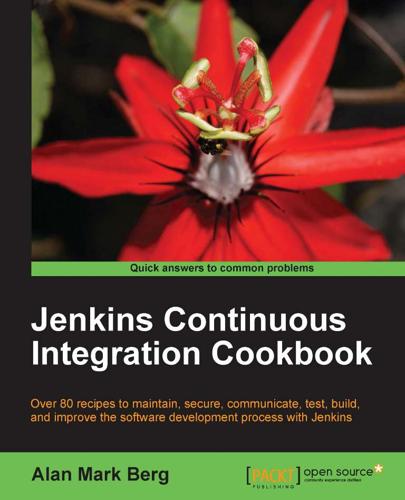
Jenkins Continuous Integration Cookbook
by
Alan Berg
Published 15 Mar 2012
Not only is this useful for practical jokes and motivational speeches directed at your distributed team, you can also perform useful actions such as a ten-minute warning alert before restarting a server. You can find some decent sound collections at http://www.archive.org/details/opensource_audio. For example, you can find a copy of the One Laptop per Child music library at http://www.archive.org/details/OpenPathMusic44V2. Within the collection, you will discover shenai.wav. First, add the sound somewhere on the Internet where it can be found. A good place is the Jenkins userContent directory. To play the sound on any connected web browser, you will need to visit the following address (replacing localhost:8080 with your own address): http://localhost:8080/sounds/playSound?

How to Run the World: Charting a Course to the Next Renaissance
by
Parag Khanna
Published 11 Jan 2011
Arab countries worried about their masses of unemployed youth have partnered with HSBC on a Pan-Arab Youth Training Program to train young people in skills necessary for the region’s manufacturing-starved labor market. Uruguay was the first country to purchase “$100 laptops” for every school-age child through the One Laptop Per Child Association, and Rwanda’s adolescent “Cheetah Generation” is getting there thanks to a similar program by President Paul Kagame. Under the leadership of Ellen Johnson Sirleaf, Liberia has partnered with Nike and the World Bank to set up girls’ vocational schools. And after Google set up a development center in Nairobi to get more Kenyans online, CEO Eric Schmidt mused, “The creativity of the people will take care of the rest.”6 How to Adopt a Country Get in a taxi in Washington, Frankfurt, or Dubai, and chances are your driver is from Somalia, Nigeria, Turkey, India, or Pakistan.

The End of Big: How the Internet Makes David the New Goliath
by
Nicco Mele
Published 14 Apr 2013
This is actually pretty similar to how Skype works right now in making voice phone calls. Mesh networking only functions well if a large number of devices are participating in the network. But it’s not a remote or new technology. It’s been around a while, and it is continuing to improve and change. The One Laptop per Child project out of MIT’s Media Lab saw mesh networking early on as a way to provide network connectivity in remote parts of the world lacking traditional network infrastructure. A village in rural Africa might not have mobile phone towers, but you can drop a couple hundred laptops into the local school and immediately have a functional mesh network.
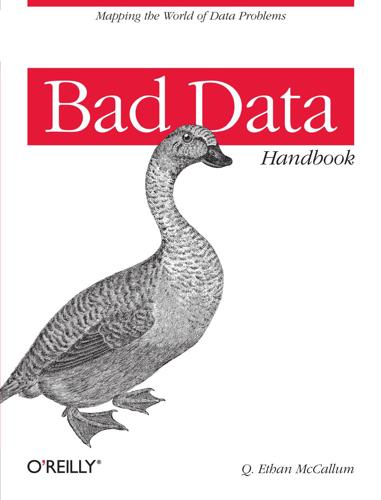
Bad Data Handbook
by
Q. Ethan McCallum
Published 14 Nov 2012
He is an active participant in both local and global open data communities, jumping between organising local meetups to assisting with the global CrisisCommons movement. His skills as a programmer began while assisting with the development Sahana Disaster Management System, were refined helping Sugar Labs, the software which runs the One Laptop Per Child XO. Tim has recently moved into the escience field, where he works to support the research community’s uptake of technology. Marck Vaisman is a data scientist and claims he’s been one before the term was en vogue. He is also a consultant, entrepreneur, master munger, and hacker. Marck is the principal data scientist at DataXtract, LLC where he helps clients ranging from startups to Fortune 500 firms with all kinds of data science projects.

Most Likely to Succeed: Preparing Our Kids for the Innovation Era
by
Tony Wagner
and
Ted Dintersmith
Published 17 Aug 2015
Where the social workers helped our students most was with their problems outside of the classroom, which for low-income kids in India is the most important thing an adult can do for them. Avanti’s learning centers use minimal technology. ConcepTests are presented on sheets of paper. Students write their answers with old-fashioned pencils. No SMART Boards, iPads, or one-laptop-per-child. Some learning centers offer a few aging computers with Internet access so students can dig for relevant online resources. But the innovation behind Mazur and Avanti’s approach isn’t using technology to do what’s always done, but completely reimagining the classroom to help students learn science and develop essential skills in the process.

The Second Machine Age: Work, Progress, and Prosperity in a Time of Brilliant Technologies
by
Erik Brynjolfsson
and
Andrew McAfee
Published 20 Jan 2014
—Austan Goolsbee, professor of economics at the University of Chicago Booth School of Business and former chairman of the Council of Economic Advisers “After reading this book, your world view will be flipped: you’ll see that collective intelligence will come not only from networked brains but also from massively connected and intelligent machines. In the near future, the best job to have will be the one you would do for free.” —Nicholas Negroponte, cofounder of the MIT Media Lab, founder of One Laptop per Child, and author of Being Digital “The Second Machine Age helps us all better understand the new age we are entering, an age in which by working with the machine we can unleash the full power of human ingenuity. This provocative book is both grounded and visionary, with highly approachable economic analyses that add depth to their vision.
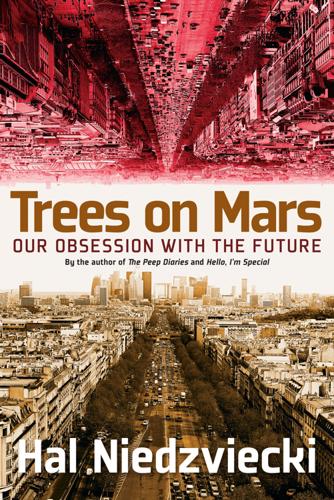
Trees on Mars: Our Obsession With the Future
by
Hal Niedzviecki
Published 15 Mar 2015
“Students who gain access to a home computer between the 5th and 8th grades tend to witness a persistent decline in reading and math scores,” the economists wrote. After being issued laptops, the students’ grades went down and stayed down for the entire duration of the study.52 “There are already several randomized, controlled trials of schools with and without One Laptop per Child,” notes Kentaro Toyama, a self-described “recovering technoholic” and former Microsoft Research Executive who worked for the company in India overseeing projects aimed at using technology to alleviate conditions leading to poverty. Now a professor at the University of Michigan and author of Geek Heresy: Rescuing Social Change from the Cult of Technology, he tells an interviewer that, “[g]enerally, what most of these studies show is that schools with laptops did not see their children gain anything in terms of academic achievement, in terms of grades, in terms of test scores, in terms of attendance, or in terms of supposed engagement with the classroom.”53 Why would One Tablet, One Child be any different?

New Laws of Robotics: Defending Human Expertise in the Age of AI
by
Frank Pasquale
Published 14 May 2020
That type of education is not universally available, whether because of real resource constraints or incompetent governance. While pockets of excellence are available to the rich, poor children in less developed countries are often priced out of quality education. In some areas, there is zero public funding for teachers. This inequality inspired Nicholas Negroponte’s campaign for “one laptop per child.” And they could easily spur philanthropic endeavors to push educational robots to classrooms (or poor households) around the world. Neuroplasticity at an early age is an extraordinary opportunity—for example, learning a language is far more difficult after childhood. Even crude robotics, with some basic packages of language and mathematical skills, could be an extraordinary gift to children around the world.

Surveillance Valley: The Rise of the Military-Digital Complex
by
Yasha Levine
Published 6 Feb 2018
Conway and Siegelman, Dark Hero of the Information Age, “When his death notice appeared in the Boston Globe, agents in the FBI’s Boston Field Office … ” 27. J. C. R. Licklider, “Man-Computer Symbiosis,” IRE Transactions on Human Factors in Electronics, March 1960. 28. Hafner and Lyon, Where Wizards Stay Up Late, 36. 29. Waldrop, Dream Machine, 204. 30. Lick seemed to be channeling a 1960s version of One Laptop per Child, an organization launched in 2005 by Nicholas Negroponte, another member of ARPA’s Cambridge Project, to give every poor child in the world a laptop in the belief that lack of access to computers was the impediment to global literacy and education. J. C. R. Licklider, “Motivation and Education through Interaction with Computer-Mediated ‘Dynamations,’” MIT Institute Archives and Special Collections, MIT Cambridge Project records, 1970s (exact date uncertain). 31.

The Best Business Writing 2013
by
Dean Starkman
Published 1 Jan 2013
According to the Khannas, “centuries of colonialism and decades of aid haven’t lifted Africa’s fortunes the way technology can.” Hence the latest urge to bombard Africa with tablets and Kindles—even when an average African kid would find it impossible to repair a damaged Kindle. And the gadgets do drop from the sky—Nicholas Negroponte, having spectacularly failed in his One Laptop Per Child quest, now wants to drop his own tablets from helicopters, which would make it harder for the African savages to say “no” to MIT’s (and TED’s) civilization. This is la mission civilatrice 2.0. It is hardly surprising that the Khannas’ deep admiration of Singapore’s technocratic authoritarianism is well received by the TEDdies—after all, they prefer to fix broken countries as if they are broken start-ups.

Good Economics for Hard Times: Better Answers to Our Biggest Problems
by
Abhijit V. Banerjee
and
Esther Duflo
Published 12 Nov 2019
Robinson, “Reversal of Fortune: Geography and Institutions in the Making of the Modern World Income Distribution,” Quarterly Journal of Economics 117, no. 4 (November 2002): 1231–94, https://doi.org/10.1162/003355302320935025/. 81 Dani Rodrik, Arvind Subramanian, and Francesco Trebbi, “Institutions Rule: The Primacy of Institutions over Geography and Integration in Economic Development,” Journal of Economic Growth 9, no. 2 (2004): 131–65, https://doi.org/10.1023/B:JOEG.0000031425.72248.85. 82 “Global 500 2014,” Fortune, 2014, accessed June 13, 2019, http://fortune.com/global500/2014/. 83 William Easterly, “Trust the Development Experts—All 7 Billion,” Brookings Institution, 2008, https://www.brookings.edu/opinions/trust-the-development-experts-all-7-billion/. 84 “The Impact of the Internet in Africa: Establishing Conditions for Success and Catalyzing Inclusive Growth in Ghana, Kenya, Nigeria and Senegal,” Dalberg, 2013. 85 World Development Report 2016: Digital Dividends,” World Bank, 2016, http://www.worldbank.org/en/publication/wdr2016. 86 Kenneth Lee, Edward Miguel, and Catherine Wolfram, “Experimental Evidence on the Economics of Rural Electrification,” working paper, 2018. 87 Julian Cristia, Pablo Ibarrarán, Santiago Cueta, Ana Santiago, and Eugenio Severín, “Technology and Child Development: Evidence from the One Laptop per Child Program,” American Economic Journal: Applied Economics 9, no. 3 (2017): 295–320, https://doi.org/10.1257/app.20150385. 88 Rema Hanna, Esther Duflo, and Michael Greenstone, “Up in Smoke: The Influence of Household Behavior on the Long-Run Impact of Improved Cooking Stoves,” American Economic Journal: Economic Policy 8, no. 1 (2016): 80–114, https://doi.org/10.1257/pol.20140008. 89 James Berry, Greg Fischer, and Raymond P.

Your Computer Is on Fire
by
Thomas S. Mullaney
,
Benjamin Peters
,
Mar Hicks
and
Kavita Philip
Published 9 Mar 2021
Virginia Eubanks, Digital Dead End: Fighting for Social Justice in the Information Age (Cambridge, MA: MIT Press, 2012). 3. Lilly Irani, Chasing Innovation: Making Entrepreneurial Citizens in Modern India (Princeton, NJ: Princeton University Press, 2019); Morgan Ames, The Charisma Machine: The Life, Death, and Legacy of One Laptop per Child (Cambridge, MA: MIT Press, 2019). 4. Luke Stark and Anna Hoffmann, “The Language We Use to Describe Data Can also Help Us Fix Its Problems,” Quartz, June 18, 2019, https://qz.com/1641640/the-language-we-use-to-describe-data-can-also-help-us-fix-its-problems/. 5. Lilly Irani and M. Six Silberman, “From Critical Design to Critical Infrastructure: Lessons from Turkopticon,” Interactions 21, no. 4 (2014): 32–35; Lilly Irani and M.